Malaysia is a diverse and vibrant country located in Southeast Asia, known for its rich cultural heritage, tropical landscapes, beautiful beaches and delicious cuisine.
This guide will help you plan the perfect trip to Malaysia by showing you the top attractions and things to do, best beaches & places to visit including maps, photos and itinerary.
- INTRODUCTION TO MALAYSIA
- BEST TIME TO VISIT MALAYSIA
- HOW LONG TO STAY IN MALAYSIA
- WHERE TO STAY IN MALAYSIA
- PRACTICAL INFORMATION
- HOW TO GET TO MALAYSIA
- HOW TO GET AROUND MALAYSIA
- WHAT TO EAT & DRINK IN MALAYSIA
- MALAYSIA THINGS TO DO
- Peninsular Malaysia
- Borneo (Sabah and Sarawak)
- MALAYSIA BEST ISLANDS
- BEST BEACHES IN MALAYSIA
- MALAYSIA TOURIST MAP
- MALAYSIA ITINERARY
- MALAYSIA PHOTOGRAPHY
- MALAYSIA ACTIVITIES
- MALAYSIA TOURS
- SHOPPING & THINGS TO BUY IN MALAYSIA
- FURTHER READING
- TRAVEL RESOURCES
INTRODUCTION TO MALAYSIA
Why visit MALAYSIA?
Malaysia is known for its stunning natural landscapes, including tropical rainforests, beautiful beaches, and lush highlands.
Popular destinations include Langkawi, Penang, Cameron Highlands, and Taman Negara National Park. Also, Malacca and George Town, historic cities with colonial architecture, are UNESCO World Heritage Sites.
Kuala Lumpur is the capital city of Malaysia and is known for its modern skyline, cultural attractions and vibrant street life.
Langkawi, Tioman, and Perhentian Islands offer pristine beaches, crystal-clear waters, and opportunities for water sports and relaxation.
Malaysia is home to diverse wildlife, including orangutans, tigers, and various species of birds. Borneo, in particular, is known for its rainforest and unique wildlife.
Malaysia is divided into two regions: Peninsular Malaysia (West Malaysia) and Borneo (East Malaysia), separated by the South China Sea.
The country is renowned for its cultural diversity, with a mix of Malay, Chinese, Indian, and indigenous influences. It is home to various religious communities, including Islam, Buddhism, Hinduism, and Christianity.
Malaysia is also known for its delicious cuisine, especially street food, offering a diverse range of flavours with a mix of Malay, Chinese and Indian influences.
It is also a great destination for outdoor activities, including trekking in the rainforest, island hopping, snorkelling and scuba diving.
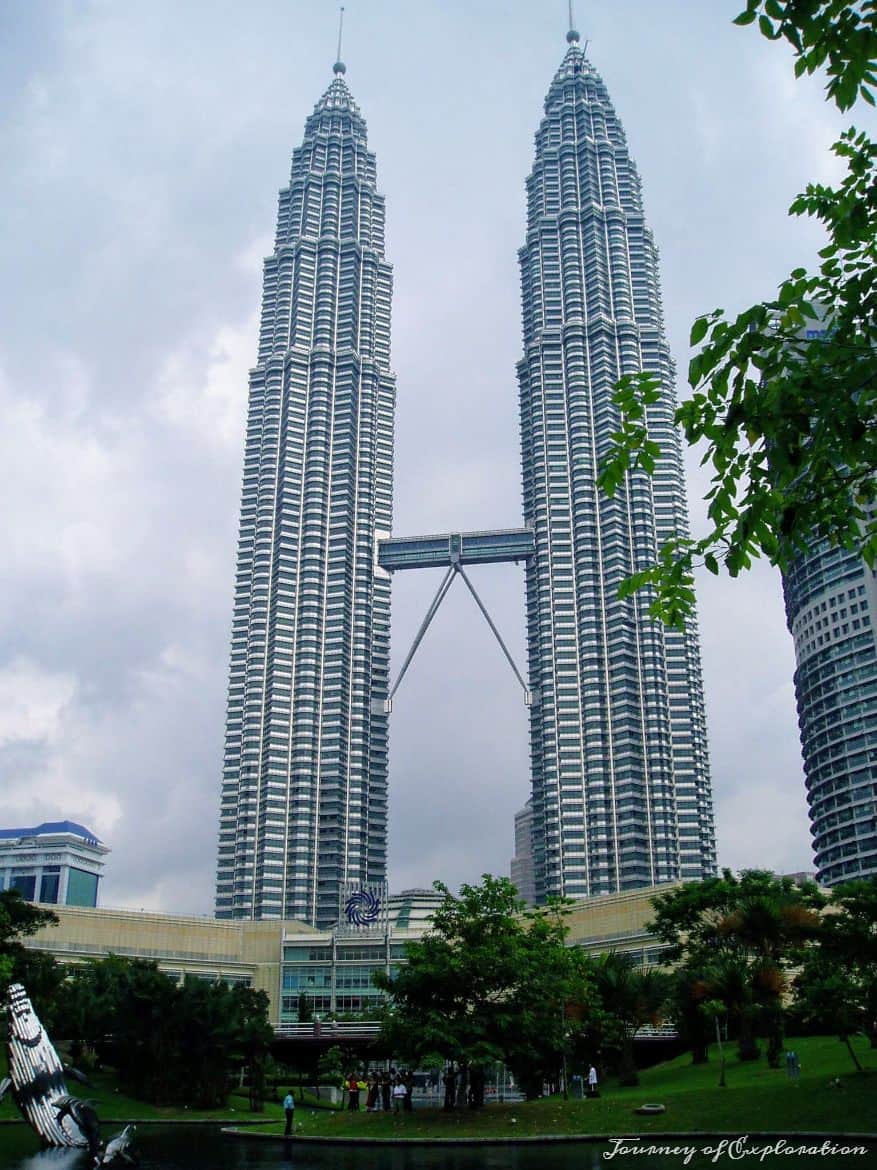
BEST TIME TO VISIT MALAYSIA
The best time to visit Malaysia depends on the specific regions you plan to explore, as the country experiences two monsoon seasons, affecting different parts of the country. Malaysia has a tropical climate, characterized by high temperatures and humidity throughout the year. Here’s a general guide:
- West Coast (e.g., Kuala Lumpur, Penang):
- The west coast, including Kuala Lumpur and Penang, experiences its main rainy season from April to October.
- The dry season is from November to March, making it an ideal time to visit. December to February is considered the peak tourist season.
- East Coast (e.g., Perhentian Islands, Tioman Island):
- The east coast experiences its main monsoon season from November to March, bringing heavy rainfall and rough seas.
- The dry season is from April to October, making this period the best time to visit the east coast.
- Borneo (e.g., Sabah, Sarawak, Kuching):
- Borneo has a relatively consistent climate throughout the year but experiences higher rainfall from November to March.
- The drier period from April to September is a good time to visit, especially for activities like trekking and wildlife spotting.
In summary, the best time to visit Malaysia, considering both the west and east coasts will be from May to September for the sunnier weather, but preferably the months of May, June or September due to the lower prices and crowds.
Weather can be unpredictable at any time of year; rain and cloudy skies are common even in the dry season. High temperatures are more or less constant throughout the year and the sea is warm all year round. Malaysia experiences higher humidity levels, so be prepared for warm and humid weather.
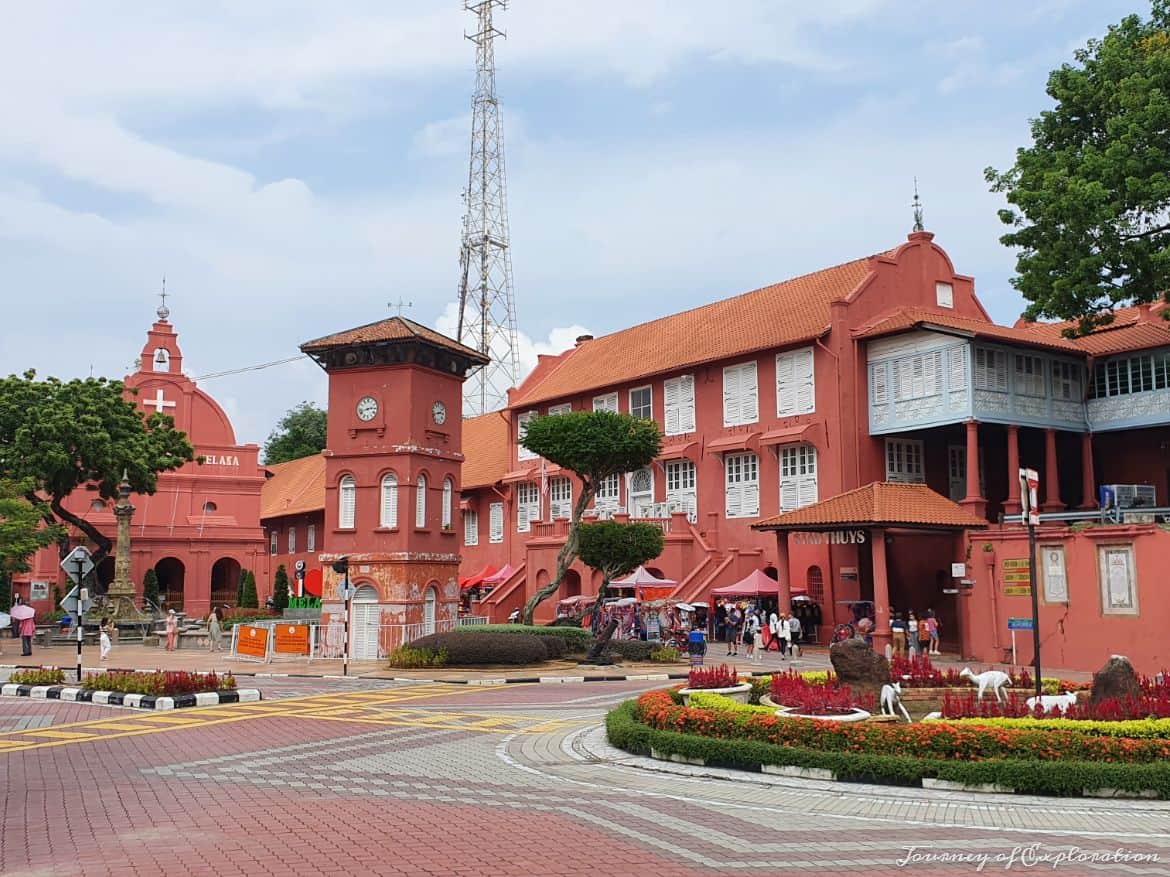
HOW LONG TO STAY IN MALAYSIA
Two weeks will be enough to cover most of the major attractions in Peninsular Malaysia, but you will need to stay longer if you want to explore multiple islands, engage in water activities, and spend some time relaxing on the beach.
If you also plan to visit Borneo (Sabah and Sarawak) for wildlife experiences consider a stay of 3 weeks or more.
You could also combine your trip to Malaysia with visiting Singapore or Brunei as part of an extended stay.
You can check a suggested itinerary here.
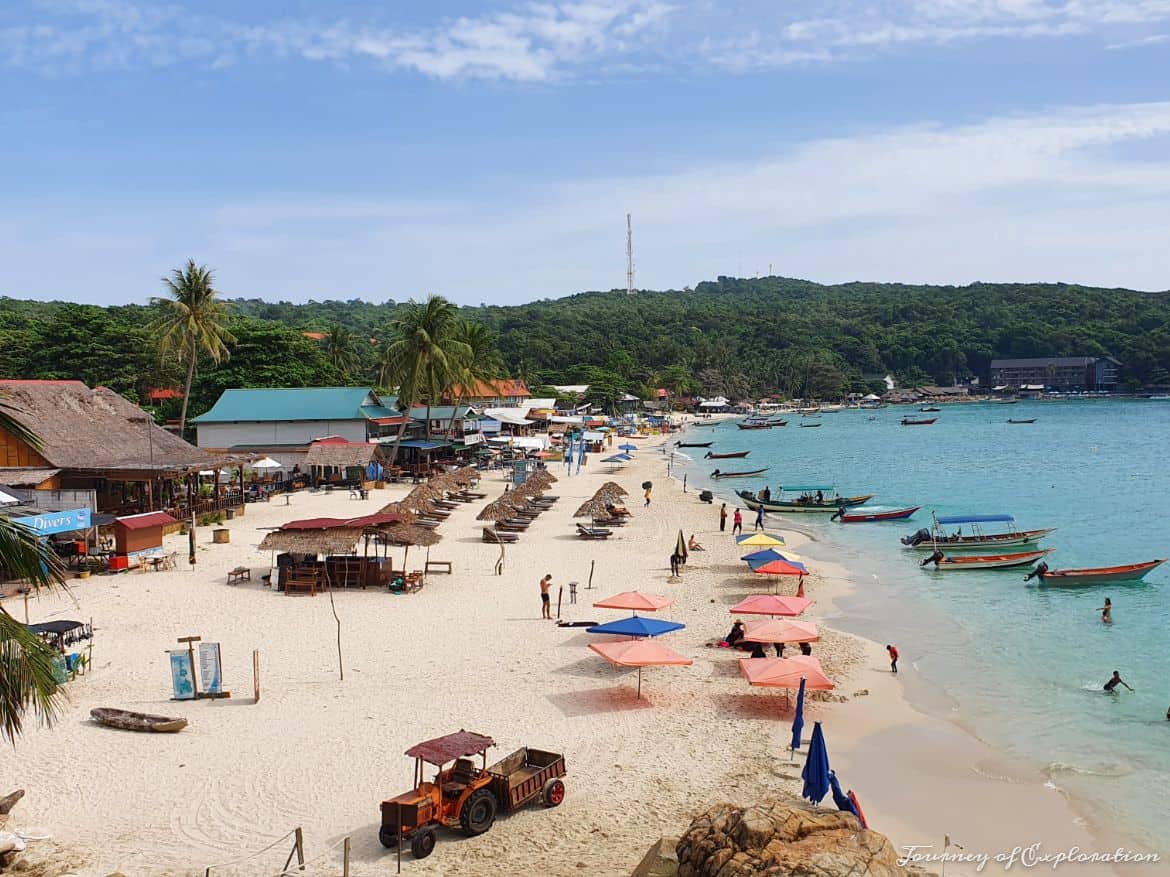
WHERE TO STAY IN MALAYSIA
Malaysia offers a diverse range of accommodations, from luxury resorts to budget-friendly hostels.
It is worth staying in different places if you want to explore the whole country; this will save time from travelling back to the same place. Worth staying in Kuala Lumpur, Cameron Highlands, Penang, Malacca and Kuala Terengganu (for visiting the East Coast).
Also, it is worth staying on one or two of the tropical islands of Malaysia like Langkawi, Perhentian, Redang or Tioman.
Best hotels in Malaysia
- Kuala Lumpur
- Mandarin Oriental: Located in the city centre with luxurious accommodations and excellent dining options.
- The Ritz-Carlton, Kuala Lumpur: A 5-star hotel offering elegant rooms and top-notch amenities.
- Traders Hotel, Kuala Lumpur: Known for its fantastic view of the Petronas Towers and a rooftop bar.
- Penang
- Eastern & Oriental Hotel, Penang: A historic and iconic hotel offering colonial-style charm and modern amenities.
- Shangri-La’s Rasa Sayang Resort & Spa: A beautiful beachfront resort in Batu Ferringhi with lush gardens and a range of facilities.
- Langkawi
- The Datai Langkawi: A luxurious resort surrounded by rainforest and overlooking the Andaman Sea.
- Four Seasons Resort Langkawi: Offers spacious villas and excellent service on a private beach.
- Malacca
- Casa del Rio Melaka: A boutique hotel on the banks of the Melaka River, known for its unique design.
- The Majestic Malacca: Blending history with modern luxury, this hotel is situated near the historic sites.
- Hatten Hotel Melaka: A 4 star hotel within walking distance from the old town with an outdoor pool and great views from the rooms and bar.
- Port Dickson
- Grand Lexis Port Dickson: Luxury resort with 2 restaurants and an outdoor pool. Water villas with indoor private pools.
- Avillion Port Dickson
- Lexis Hibiscus Port Dickson
- Kuala Terengganu
- Felda Residence Kuala Terengganu: Decent hotel offering great views.
- Redang
- The Taaras Beach & Spa Resort
- Laguna Redang Island Resort
- Redang Beach Resort
- Perhentian Islands
- BuBu Long Beach Resort
- MIMPI Perhentian Resort
- Senja Bay Resort
- Sabah (Borneo)
- Shangri-La’s Tanjung Aru Resort & Spa: A beachfront resort with stunning views and extensive recreational facilities.
- Gaya Island Resort: Nestled in the Tunku Abdul Rahman Marine Park, offering a tranquil island getaway.
- Sarawak (Borneo)
- The Waterfront Hotel Kuching: Located on the waterfront, providing convenient access to the city’s attractions.
- Hilton Kuching: Offers comfortable accommodations and a central location in Kuching.
Click here to check and compare prices on accommodation for the whole of Malaysia. You can find the hotels on this map.
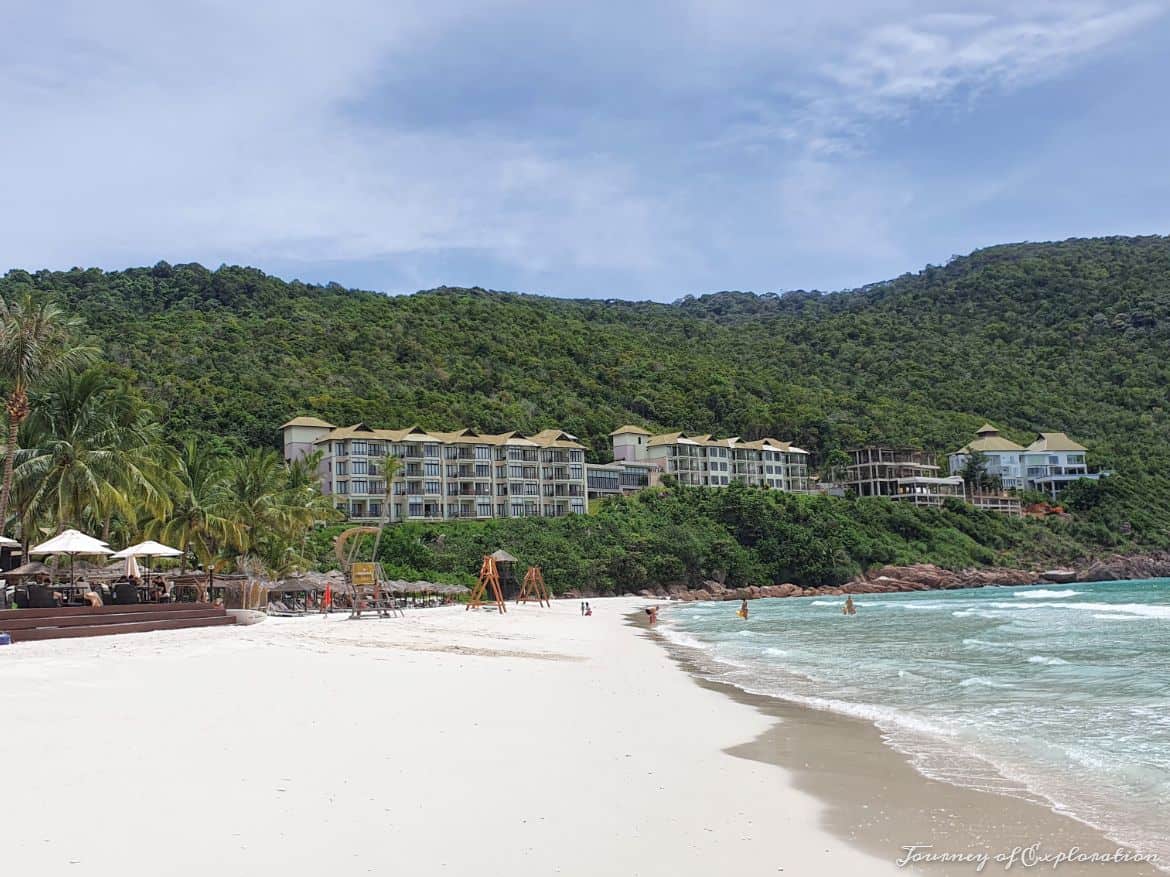
PRACTICAL INFORMATION
Entry requirements/Visa
Citizens of most countries are allowed visa-free entry for tourism purposes for a certain period. The duration varies depending on the nationality.
Some countries have the option for eVisa or visa on arrival. Ensure you meet the eligibility criteria and apply in advance if necessary. For full details check this website.
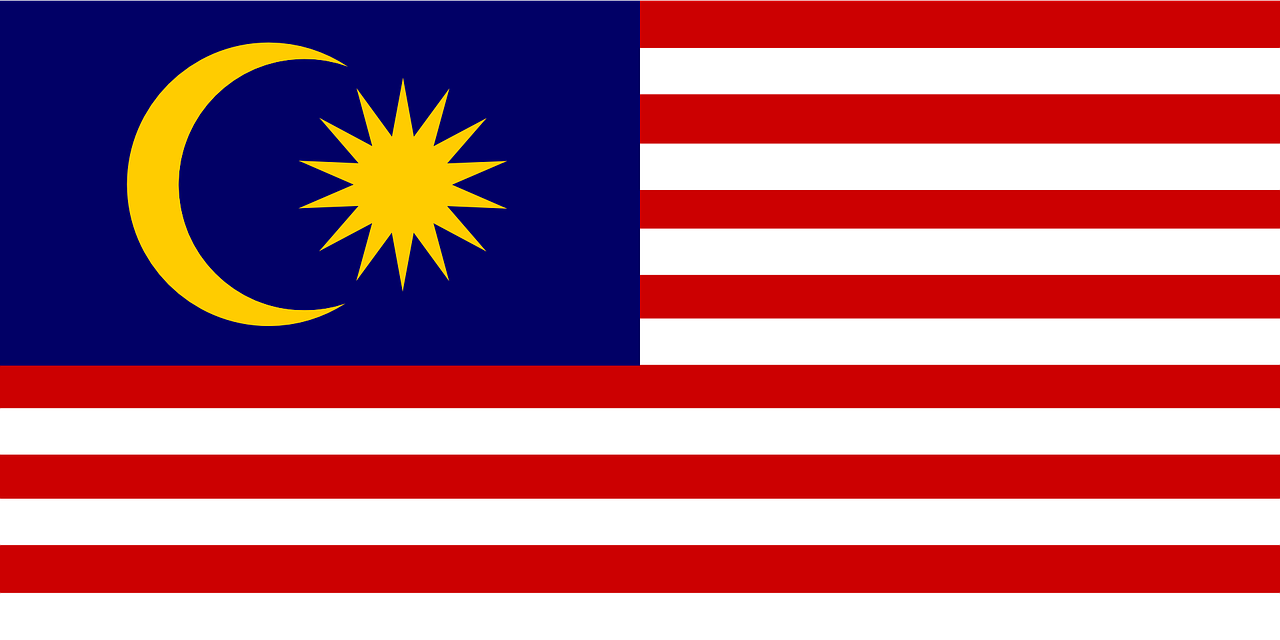
Safety
Malaysia is generally considered a safe destination for travellers. The country has a well-developed tourism infrastructure, and millions of tourists visit each year without encountering significant safety issues.
Petty crime such as pickpocketing can occur, especially in crowded areas. You should be vigilant with your belongings and avoid displaying valuable items openly.
It is worth checking the latest health advice regarding vaccinations. Using mosquito repellent is a must in areas where mosquito-borne diseases are prevalent. Consume food and water from reputable establishments.
While the country is generally tolerant, it’s advisable to be respectful of local customs and traditions. Dress modestly, particularly in religious sites.
Travel Insurance
It’s always advisable to get travel insurance before you travel in case of an accident, medical emergency or flight delay.
SafetyWing is an excellent choice for long-term travellers. Alternatively, you can use one of the price comparison websites for cheaper quotes.
Weather
Malaysia has a tropical climate characterized by high temperatures and humidity throughout the year. The country experiences two distinct monsoon seasons, which influence the weather patterns.
The Northeast Monsoon (November to March) brings heavy rainfall to the east coast of Peninsular Malaysia
Southwest Monsoon (May to September) affects the west coast of Peninsular Malaysia, bringing heavy rainfall to states like Penang, and Langkawi.
Borneo generally experiences high humidity and rainfall throughout the year.
Overall, temperatures in Malaysia are high and stable and range from around 25°C to 32°C (77°F to 90°F) on average.
Malaysia has high humidity levels, often exceeding 80%. Humidity is relatively constant throughout the year.
More information regarding the weather and average temperatures can be found here.
Local Customs & Etiquette
- Handshakes are generally acceptable for greeting men and women. However, it’s customary for men not to touch Muslim women and the best greeting is just a nod and a smile.
- Shoes must always be removed before entering a Malaysian house.
- Malays usually eat with their hands at home.
- The right hand is always used when eating with one’s hand, when giving and receiving something, as well as during a handshake.
- Shoes must be removed when entering places of worship, such as mosques and temples and make sure that your legs and shoulders are covered up to elbows and knees (ideally long sleeves and trousers).
- The country’s Muslim population does not drink alcohol and does not eat pork.
- Many Malay women wear a tudung (headscarf). Women are advised to dress modestly in the most strict Muslim states of north east coast
- Public displays of affection, especially in rural areas, should be avoided, especially between gay couples. Homosexuality is illegal in Malaysia.
Language
The official language is Malay (Bahasa Malaysia), but English, Chinese, and Tamil are also widely spoken. The alphabet is in Latin characters.
Basic words:
- Hello/Hi – Salaam
- Good morning – Selamat pagi
- Good afternoon – Selamat tengahari
- Good evening – Selamat petang
- Good night – Selamat malam
- Thank you – Terima kasih
- Welcome –Selamat datang
- Yes – Ya
- No – Tidak
- Excuse me/I’m sorry – Maafkan saya
- Please – Sila
Money
The currency used in Malaysia is the Malaysian Ringgit, abbreviated as MYR or symbolized as RM. The Malaysian Ringgit is further subdivided into 100 sen. Banknotes and coins are issued in various denominations.
Major credit cards are accepted in urban areas and tourist destinations, but it’s a good idea to have some cash on hand, especially when travelling to more remote areas.
Malaysia is generally considered to be an affordable travel destination, especially when compared to many Western countries. The cost of living in Malaysia is lower than in some developed nations, and travellers can find a range of options to suit different budgets.
Electricity
The power plugs and sockets are of type G (with three rectangular pins, similar to the British one).
The standard voltage is 230V, and the standard frequency is 50Hz.
Internet/Mobile Phone
Malaysia has several major mobile network operators, including Maxis, Celcom, Digi, and U Mobile.
To avoid roaming charges, it is worth buying a prepaid SIM card at the airport, convenience stores or mobile service provider outlets. These SIM cards typically include data, talk time, and text messaging.
Wi-Fi is widely available in hotels, cafes, shopping malls, and public spaces. Many accommodations provide free Wi-Fi for guests.
Airalo is also a good alternative as it provides access to eSIMs (digital SIM cards) for over 200 countries. Travellers can download and install a digital data pack and get free internet without roaming charges. However, Airalo is compatible with only the latest mobile phones
Packing List
Here’s a general packing list for your trip to Malaysia:
- Lightweight Clothing, like T-shirts and shorts made of cotton or linen.
- Modest clothes that cover your shoulders and knees, like trousers, If you plan to visit religious sites.
- Swimwear
- A compact rain jacket or poncho
- Comfortable walking shoes for exploring cities and sandals for the beach.
- Hat and Sunglasses
- Light Jacket for the cooler nights, especially in the highlands
- Sunscreen and Insect Repellent
- Compact Umbrella
- Travel Adapter
- Mobile Powerbank
- Snorkelling Gear
- Waterproof Backpack
- Underwater camera for snorkelling
For more information on travel gear and what to pack click below.
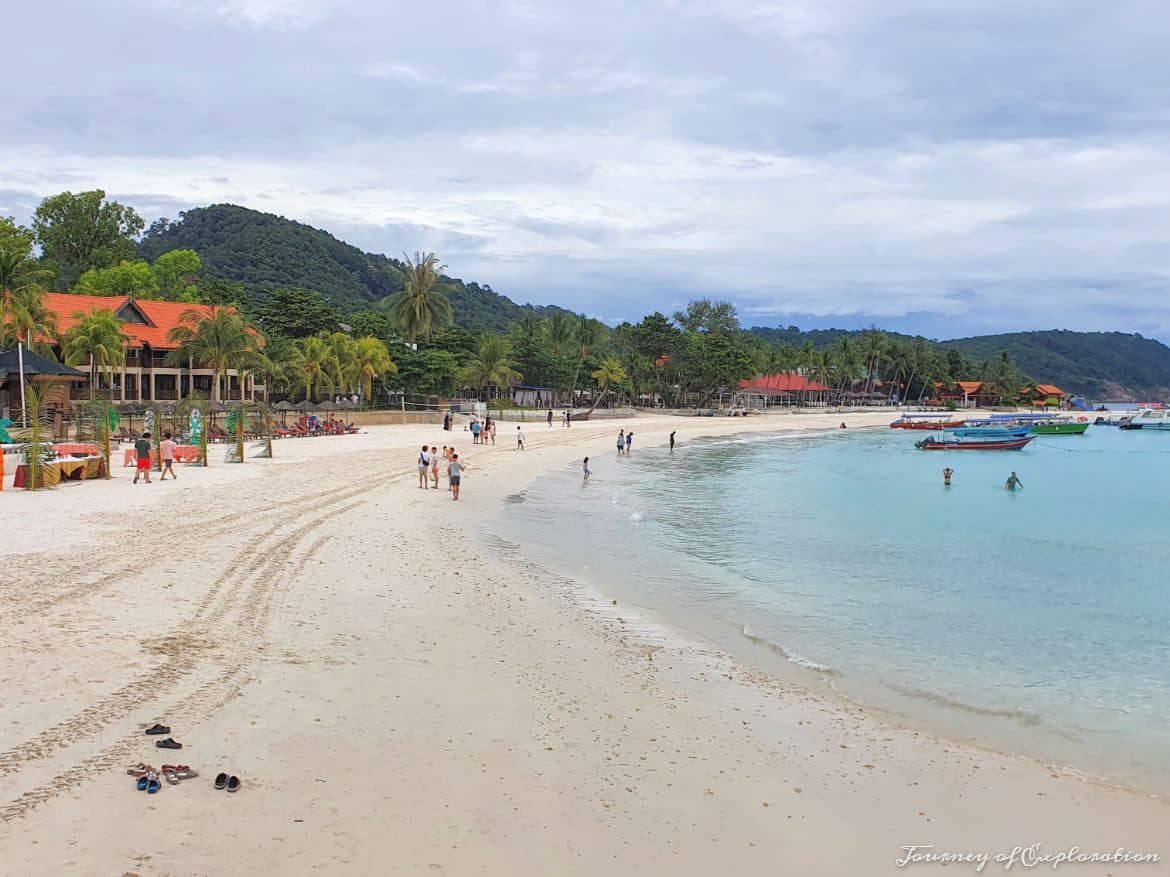
HOW TO GET TO MALAYSIA
By Plane
Kuala Lumpur International Airport (KLIA) is the main international airport and a major hub for both domestic and international flights.
There are two terminals. KLIA’s main terminal, often referred to as KLIA1, handles both domestic and international flights. KLIA2 is a dedicated terminal for low-cost carriers and is one of the largest terminal buildings in the world. It is connected to the main terminal by the Aerotrain, a dedicated train service.
Other international airports in Malaysia include Penang International Airport, Langkawi International Airport, and Kota Kinabalu International Airport in Sabah. An alternative option is to fly to Singapore.
Numerous international airlines operate flights to Malaysia. There are also low-cost airlines (AirAsia) between various destinations in South East Asia.
For the best website to book your flights, check the link below. Always check prices in advance for the best deals.
Getting from/to the airport
KLIA is located in Sepang, approximately 45 kilometres (28 miles) south of Kuala Lumpur. KLIA is well-connected to the city centre of KL and other parts of the country. Here are some of the ways to get to KLIA:
- KLIA Ekspres: This is a high-speed train service that connects KLIA to Kuala Lumpur city centre. The journey takes approximately 28 minutes. Trains operate every 15-20 minutes. You can board the KLIA Ekspres at KL Sentral, and it provides a seamless and efficient connection.
- KLIA Transit: Similar to KLIA Ekspres but with additional stops, KLIA Transit connects KLIA to KL Sentral and other stations. It takes around 35 minutes to reach KLIA from KL Sentral.
- Taxis operate on a metered system, and the journey time depends on traffic conditions.
- Services like Grab operate in Kuala Lumpur and offer an alternative to traditional taxis. You can use the Grab app to book a ride to KLIA.
- Airport Coach: There are long-distance buses operated by Airport Coach that connect KLIA with various cities and towns in Malaysia.
- Rapid KL Bus: The Rapid KL bus service provides an economical option to travel from different parts of Kuala Lumpur to KLIA. More information can be found here.
By Road
From Thailand: If you’re coming from Thailand, you can enter Malaysia by road. There are several border crossings between the two countries.
From Singapore: If you’re coming from Singapore, you can travel by bus, train, or car. The road and rail connections are well-developed.
Passport checks are required at borders so expect delays at peak times, especially from/to Singapore.
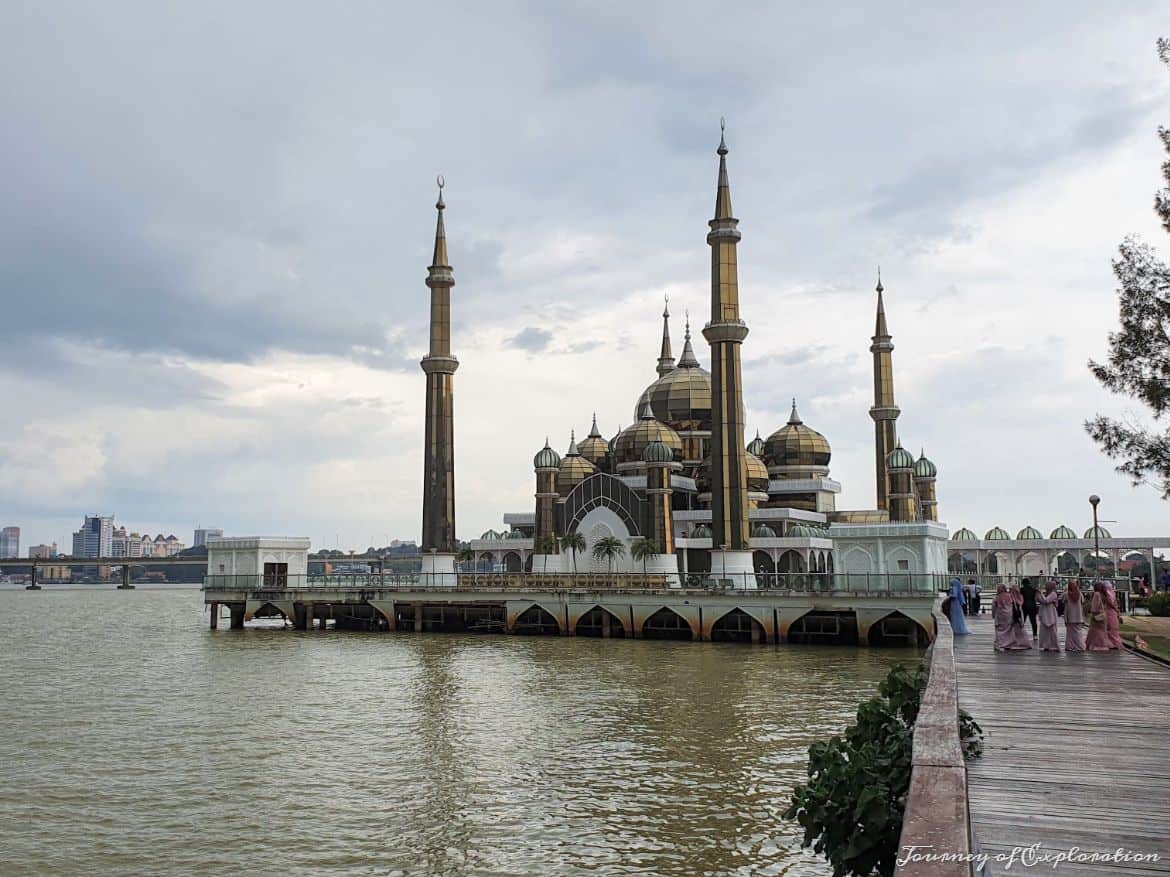
HOW TO GET AROUND MALAYSIA
By Plane
If you plan to explore different regions in Malaysia, domestic flights are one of the best and fastest ways to travel around the country and are relatively affordable. There are numerous domestic flights connecting the major cities and between Peninsular Malaysia and East Malaysia (Sabah and Sarawak). Here is a guide to travelling by plane in Malaysia:
Major Airlines:
- Malaysia Airlines: The national carrier, Malaysia Airlines, operates domestic flights connecting Kuala Lumpur with various cities, including Penang, Langkawi, Kota Kinabalu, and Kuching.
- AirAsia: AirAsia, a prominent low-cost airline, offers an extensive network of domestic flights covering major cities and popular destinations. They operate mainly from Kuala Lumpur International Airport (KLIA2) and other regional airports.
- Firefly: Firefly is a regional airline with a focus on connecting smaller cities and towns within Malaysia. They operate from Subang Skypark in Kuala Lumpur.
- Batik Air: Previously operated as Malindo Air serves domestic routes along with international destinations. They operate from KLIA and focus on providing a combination of full-service and low-cost options.
- MASwings: MASwings specializes in serving destinations in East Malaysia, connecting cities in Sabah and Sarawak.
- Berjaya Air: Operates private flights to Redang Island.
Domestic flights from Kuala Lumpur operate to the following destinations: Georgetown (Penang), Langkawi, Johor Bahru, Kuala Terengganu, Kota Bharu (close to Perhentian Islands), Alo Setar (Kedah), Kuantan, Kuching (Sarawak), Bintulu (Sarawak), Miri (Sarawak), Sibu (Sarawak), Kota Kinabalu (Sabah), Sandakan (Sabah), Tawau (Sabah) & Labuan.
You can check the following website for the best deals.
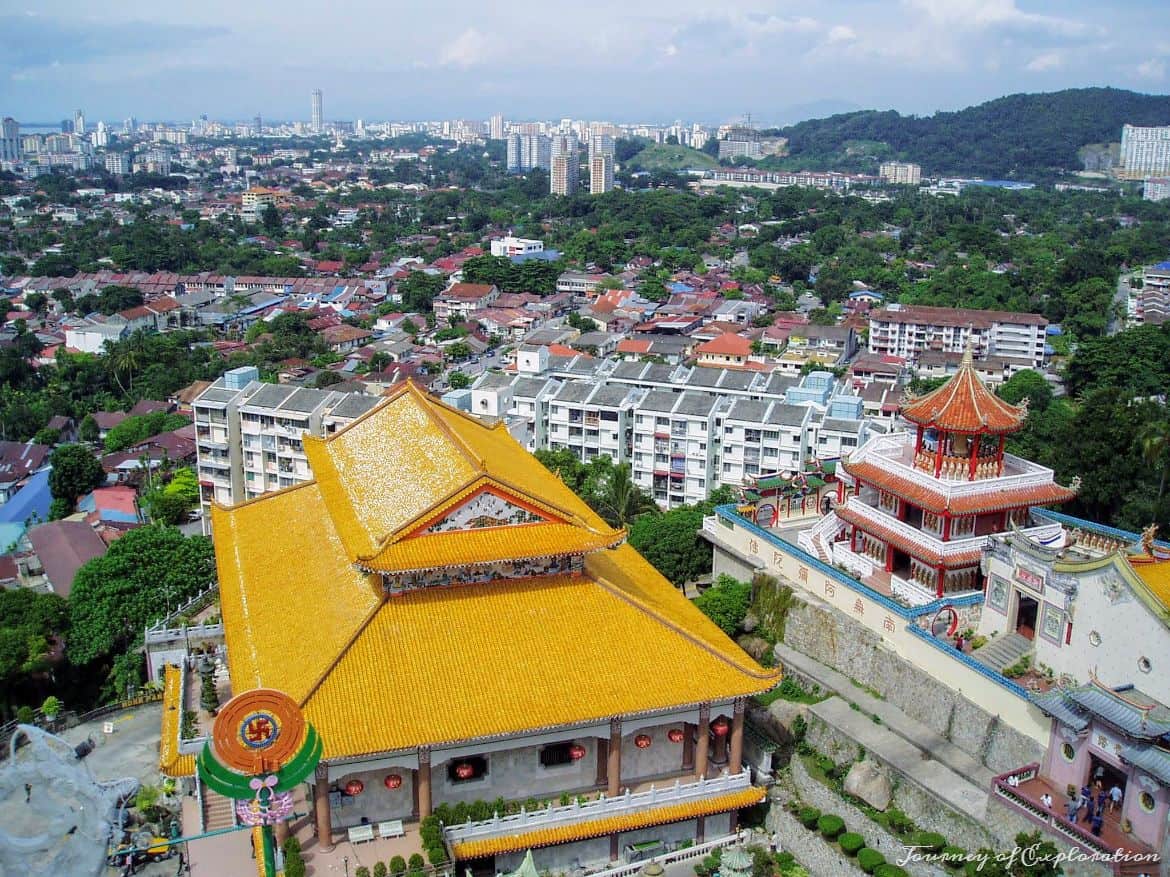
By Car
Renting a car in Malaysia is a popular option for travellers who want the flexibility to explore the country at their own pace. The best place to rent a car is the airport.
Car rental can be relatively cheap off-season. Better to book in advance before your travel for the best deals. Also in high season, there might be low availability and the prices can be much higher if you leave it until you arrive. Check the link below to book and compare car rental prices.
Driving in Malaysia
You can drive in Malaysia with a valid international driving permit (IDP) or a valid driver’s license from your home country. Driving is on the left side, like in the UK.
Malaysia has an extensive network of tolled highways. Ensure you have sufficient cash or a Touch ‘n Go card for toll payments.
Expect traffic congestion, particularly in major cities like Kuala Lumpur. Also, main highways can be congested during peak times, particularly during the holidays. It is advisable to plan accordingly, especially if you go to the KLIA airport.
Parking
- Car Parks: Most cities, especially Kuala Lumpur, have numerous car parks. These can be found near shopping malls, office buildings, and popular areas. Pay attention to parking fees, which are usually hourly.
- Street Parking: Some areas may offer street parking with designated parking meters or ticket machines. Make sure to pay the required fee and adhere to time limits.
- Parking Coupons: In certain areas, especially in historic towns like George Town in Penang, you might need to use parking coupons. These can be purchased from nearby stores or machines, and you display them on your dashboard.
- Mobile Parking Apps: Some cities have introduced mobile parking apps that allow users to pay for parking through their smartphones. Check if the city you’re in has such services.
By Taxi
Taxis are a common mode of transportation in Malaysia, especially in urban areas and tourist destinations. There are taxi stands in most towns.
In most areas, taxis operate on a metered fare system. The meter calculates the fare based on the distance travelled and time spent waiting in traffic. Some taxis, especially at airports, may have fixed rates to specific destinations. Make sure to confirm the fare before starting your journey.
Grab is a popular ride-sharing service in Malaysia. You can download the Grab app, input your destination, and the app will connect you with a nearby driver. Payment is made through the app. This is the cheapest option if you don’t have a car and there are no bus connections. Maxim is another taxi app offering cheap fares.
Taxis are usually quite affordable even for long-distance travel, if it is shared between more than two people.
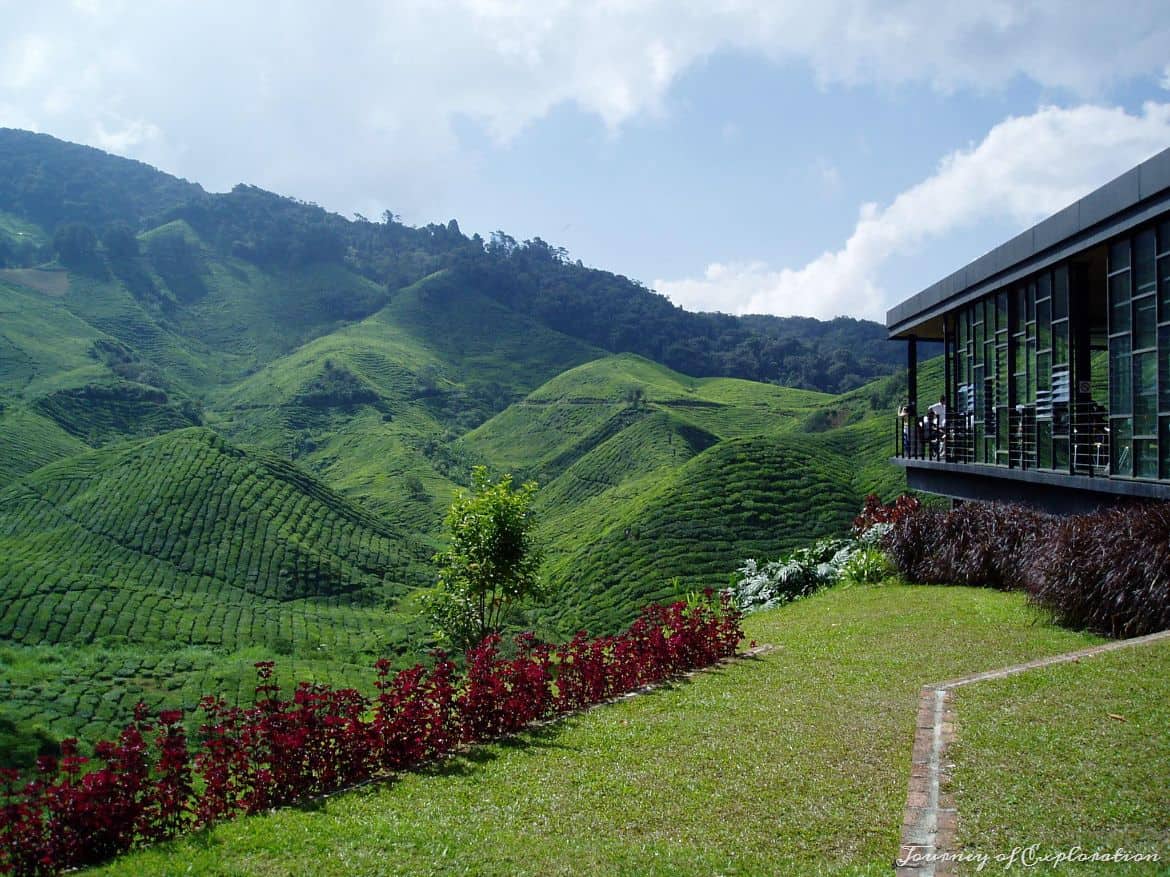
By Bus
Bus travel is a convenient and affordable mode of transportation in Malaysia, connecting various cities, towns, and rural areas. Here’s a guide to bus travel in Malaysia:
Types of Buses:
- Express Buses: These long-distance buses (coaches) operate between major cities and towns. They are known for comfort and typically have air-conditioning. Express buses are a popular choice for intercity travel.
- Local Buses: Local buses operate within cities and towns, providing transportation for shorter distances. They are often used for commuting within urban areas.
- Shuttle Buses: Some areas, especially tourist destinations, have shuttle buses that transport visitors to key attractions or points of interest.
- RapidKL Buses: RapidKL is a public bus service operating in the Klang Valley and Kuala Lumpur. It provides an extensive network of routes within the city and surrounding areas.
Express and local buses usually operate from separate stations. Tickets can be purchased at bus terminal and from bus company counters. There are different companies, but prices are similar and inexpensive. Many bus operators also offer online booking services through their websites. For popular routes or during holidays, consider booking in advance. Buses don’t usually have restrooms, although on longer routes, there is a rest stop every several hours and, if necessary, a 30-minute food break.
Major Bus Operators:
- Transnasional: A major long-distance bus operator connecting various cities and towns in Peninsular Malaysia.
- Plusliner: Operates express and local bus services, connecting major cities and towns.
- Konsortium Bas Ekspres (KTB): Another prominent express bus operator serving popular routes.
- RapidKL: Operates city buses within Kuala Lumpur and the Klang Valley. They also operate the LRT and monorail services.
- Cityliner: Provides bus services connecting smaller towns and rural areas.
Bus Terminals In KL:
- Pudu Sentral: Situated in the centre of Kuala Lumpur, Pudu Sentral is the major bus terminal serving both local and express buses.
- Terminal Bersepadu Selatan (TBS): Located to the south of Kuala Lumpur, TBS is the main bus terminal serving southern destinations. It houses various bus operators, including Transnasional and Plusliner.
- Terminal Bas Ekspres Shah Alam: Located in Shah Alam, this terminal serves buses travelling to various destinations.
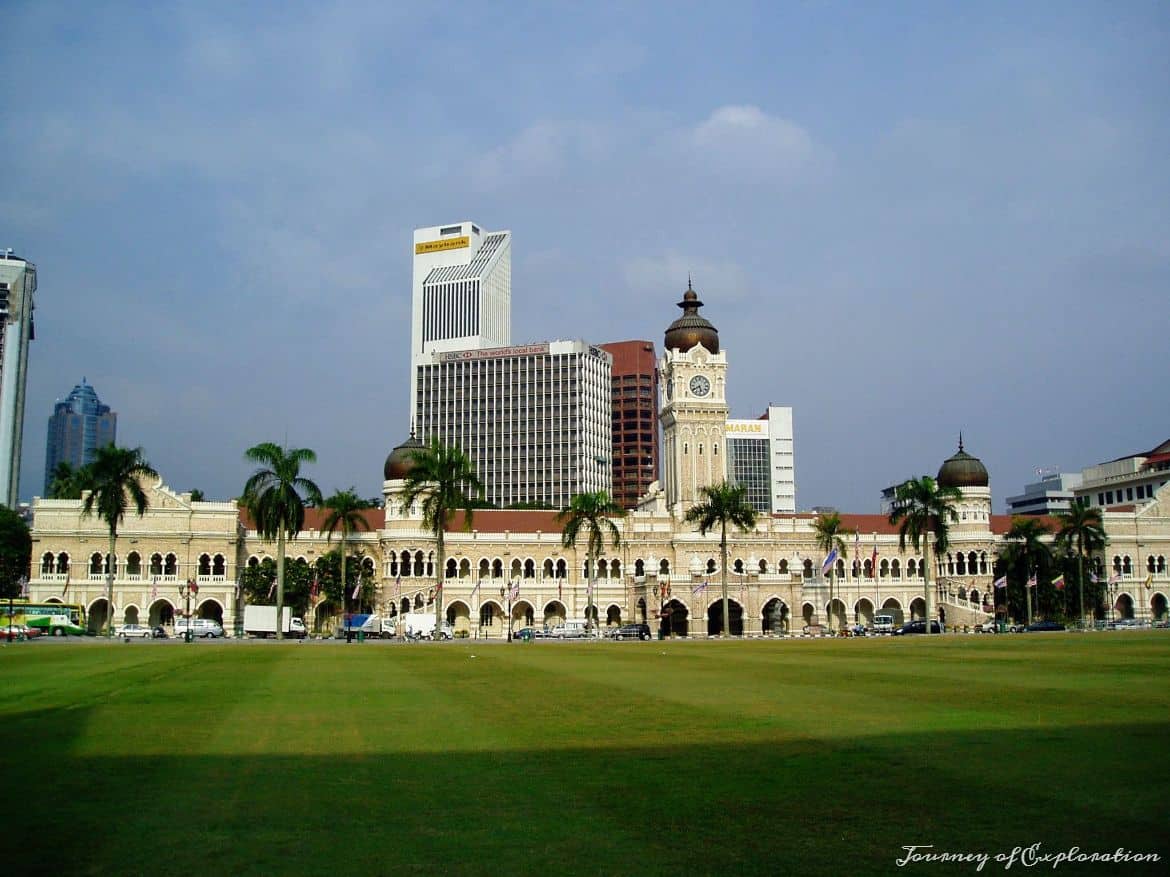
By Train
Malaysia has a decent railway system that connects various regions within the country (Peninsular Malaysia). The railway network is operated by Keretapi Tanah Melayu Berhad (KTMB), the national railway company.
There are two major train routes.
- North-South Line: connects Singapore to Kuala Lumpur, Ipoh, Penang, and further north. Stops include major cities and towns along the west coast of Peninsular Malaysia.
- East Coast Line: Links Gemas to Tumpat, passing through the scenic landscapes of the East Coast. Popular stops include Kota Bharu and Kuala Terengganu. This route, known as the Jungle Railway, is a scenic train route that runs through the interior of Peninsular Malaysia.
Here’s a guide to the types of trains in Malaysia:
- KTM Intercity: KTM Intercity trains operate long-distance routes, connecting major cities and towns. These trains offer various classes, including Economy, Business, and Superior Night Class (overnight sleeper trains).
- Electric Train Service (ETS): ETS is a high-speed electric train service that operates on the electrified double-track railway lines. ETS connects cities like Kuala Lumpur, Ipoh, and Penang, offering a faster travel option.
- Komuter: KTM Komuter is a commuter train service operating in the Klang Valley, connecting areas around Kuala Lumpur and its suburbs. Komuter trains are a popular choice for daily commuters.
You can buy tickets at train stations or through the KTMB website. Prices are relatively cheap. It’s advisable to book in advance, especially during peak travel times.
Travelling by train can be a lot slower compared to travelling by bus, so it’s not recommended if you have limited time in Malaysia.
However, the Jungle Railway is a unique travel experience, This railway journey takes you through lush jungles, picturesque landscapes and old colonial stations, providing access to remote areas that may not be easily reachable by road.
By Ferry
Ferries connect the mainland with various islands of Malaysia. Vessels are either modern speedboats or compact motorized fishing boats. You generally buy your ticket in advance from booths at the jetty. Some of the popular ferry routes include:
- Kuala Kedah to Langkawi: Kuala Kedah, located on the mainland, serves as a departure point for ferries to Langkawi.
- Kuala Perlis to Langkawi: Ferries from Kuala Perlis offer another option for travelling to Langkawi.
- Kuala Besut to Perhentian Islands: Kuala Besut is the gateway to the Perhentian Islands in the northeastern part of Peninsular Malaysia.
- Mersing to Tioman Island: Ferries operate from Mersing on the mainland to Tioman Island
- Merang Jetty or Kuala Terengganu to Redang Island: They serve as departure points for ferries to Redang Island.
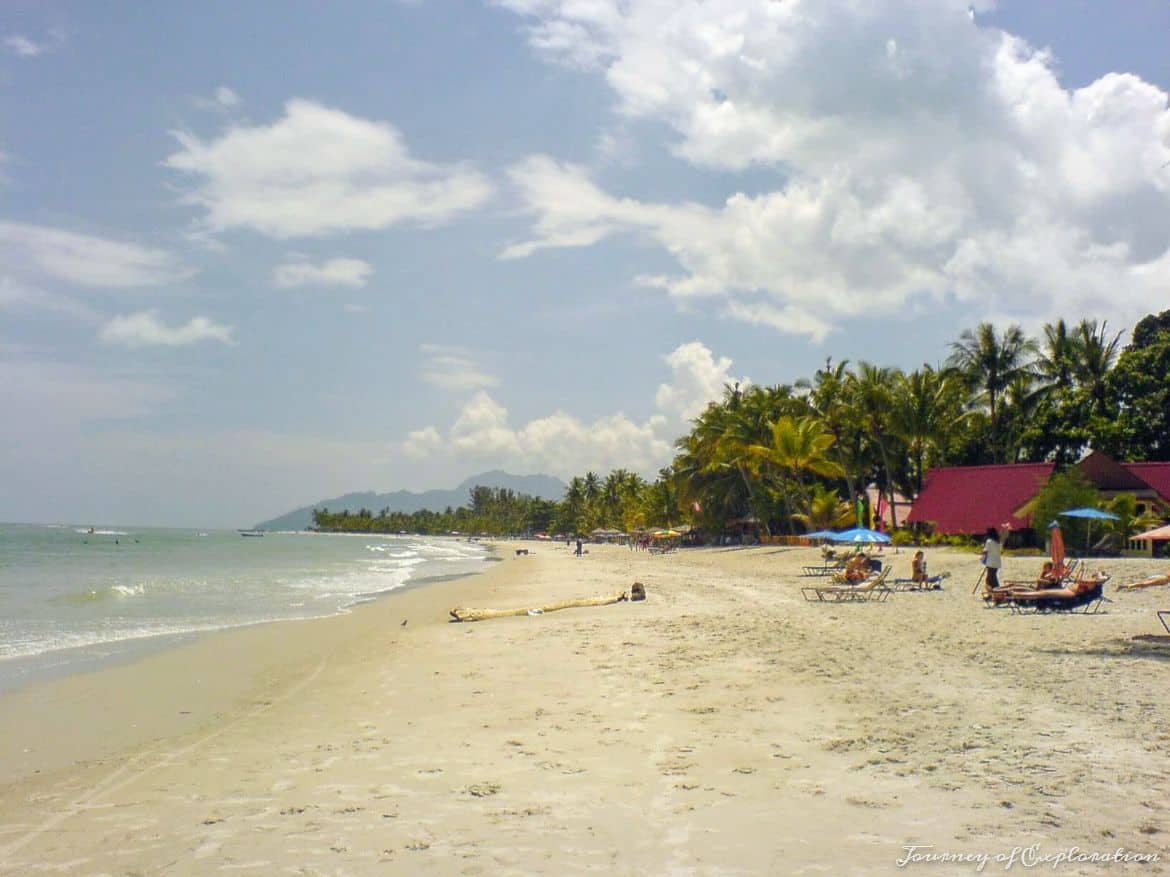
WHAT TO EAT & DRINK IN MALAYSIA
Best Places to Eat in Malaysia
Here is a guide to the best places to eat in Malaysia and sample the unique local cuisine. Hawker Centers, Food Markets & Street Food is the best way to experience different favours with affordable prices.
- Kuala Lumpur: Kuala Lumpur is a great place to experience Malaysian cuisine with a variety of eateries, from street stalls to upscale restaurants.
- Jalan Alor: It is a popular hawker centre and a great place to try a variety of Malaysian dishes, from satay to Hokkien mee.
- Jalan Petaling Food Market: This massive hawker centre is a great place to try a variety of Chinese, Malay, and Indian dishes.
- Melaka: Melaka is the best place to try Nyonya Cuisine, a unique cuisine with a blend of Malay and Chinese flavours. Try dishes like ayam pongteh and asam pedas.
- Penang: Known as the food capital of Malaysia, Penang offers a wide array of street food, including char kway teow, laksa, and nasi kandar.
- Sarawak: Head to Kuching, the capital of Sarawak, to sample authentic Sarawak laksa, kolo mee, and umai (raw fish salad)
- Terengganu: Visit Kuala Terengganu to sample local delights such as nasi dagang (rice with fish curry), keropok lekor (fish crackers), and satar (grilled fish wrapped in banana leaves).
- Coastal Towns: Head to coastal regions like Langkawi, Kota Kinabalu, and Kuching to enjoy fresh seafood straight from the ocean. Feast on grilled fish, prawns, crabs, and shellfish prepared in various local styles.
Malaysian Cuisine
Malaysian cuisine is diverse, flavourful, and influenced by various cultures, including Malay, Chinese, Indian, and indigenous communities. Here are some must-try Malaysian dishes:
- Nasi Lemak: Malaysia’s national dish, featuring fragrant coconut rice served with anchovies, peanuts, boiled eggs, cucumber, and spicy sambal.
- Rendang: A rich and aromatic dry curry made with beef or chicken, coconut milk, and a blend of spices, slow-cooked to perfection.
- Satay: Skewered and grilled meat, typically served with a delectable peanut sauce. Common choices include chicken and beef satay.
- Roti Canai: A flatbread often paired with dhal (lentil curry) or various curries. It’s a popular choice for breakfast or snacks.
- Char Kway Teow: Stir-fried flat rice noodles with prawns, Chinese sausage, bean sprouts, and savoury soy sauce, prepared in a wok.
- Nasi Goreng: Malaysian fried rice with ingredients like prawns, chicken, eggs, and vegetables, seasoned with sweet soy sauce.
- Laksa: A spicy noodle soup with a coconut milk base. Varieties include Penang Laksa and Sarawak Laksa.
- Hainanese Chicken Rice: Poached chicken served with fragrant rice, accompanied by chilli sauce, ginger paste, and a flavorful broth.
- Mee Goreng Mamak: Stir-fried noodles with a spicy and tangy sauce, often cooked with prawns, tofu, and vegetables, showcasing Indian-Muslim influences.
- Otak-Otak: Grilled fish paste mixed with spices, wrapped in banana leaves. A popular snack or side dish.
- Cendol: A refreshing dessert comprising green rice flour jelly, coconut milk, shaved ice, and palm sugar, perfect for Malaysia’s tropical climate.
- Kuih: Assorted traditional Malaysian desserts, including colourful treats like kuih lapis, onde-onde, and kuih ketayap.
- Murtabak: Stuffed flatbread filled with minced meat, onions, and sometimes eggs, often served with a side of curry.
- Ikan Bakar: Grilled fish marinated with spices and wrapped in banana leaves, offering a delightful seafood experience.
- Teh Tarik: Malaysian pulled tea, prepared by skillfully pouring hot tea back and forth to create a frothy texture.
- Asam Laksa: A spicy and tangy noodle soup, asam laksa showcases a tamarind-infused broth, rice noodles, flaked fish, and an array of aromatic herbs. It’s particularly popular in Penang.
- Nasi Dagang: Originating from the East Coast, nasi dagang consists of steamed glutinous rice and fragrant rice cooked in coconut milk. Served with fish curry and pickled vegetables, it’s a flavorful delight.
- Durian: Revered as the “king of fruits,” durian is a polarizing delicacy with a potent aroma. Its custard-like flesh varies among different varieties, creating a distinctive and memorable taste.
- Hokkien Mee: This noodle dish combines thick yellow noodles and rice vermicelli stir-fried with prawns and squid in a flavorful seafood broth. Garnished with crispy shallots and lime, it’s a savoury delight.
- Keropok Lekor: Hailing from the East Coast, keropok lekor is a popular fish cracker made from a blend of fish and sago flour. Deep-fried to perfection, it’s enjoyed with a side of spicy dipping sauce.
- Kaya Toast: A beloved breakfast or tea-time treat, kaya toast features toasted bread spread with kaya, a sweet coconut and egg jam. Often paired with soft-boiled eggs and coffee or tea, it’s a comforting classic.
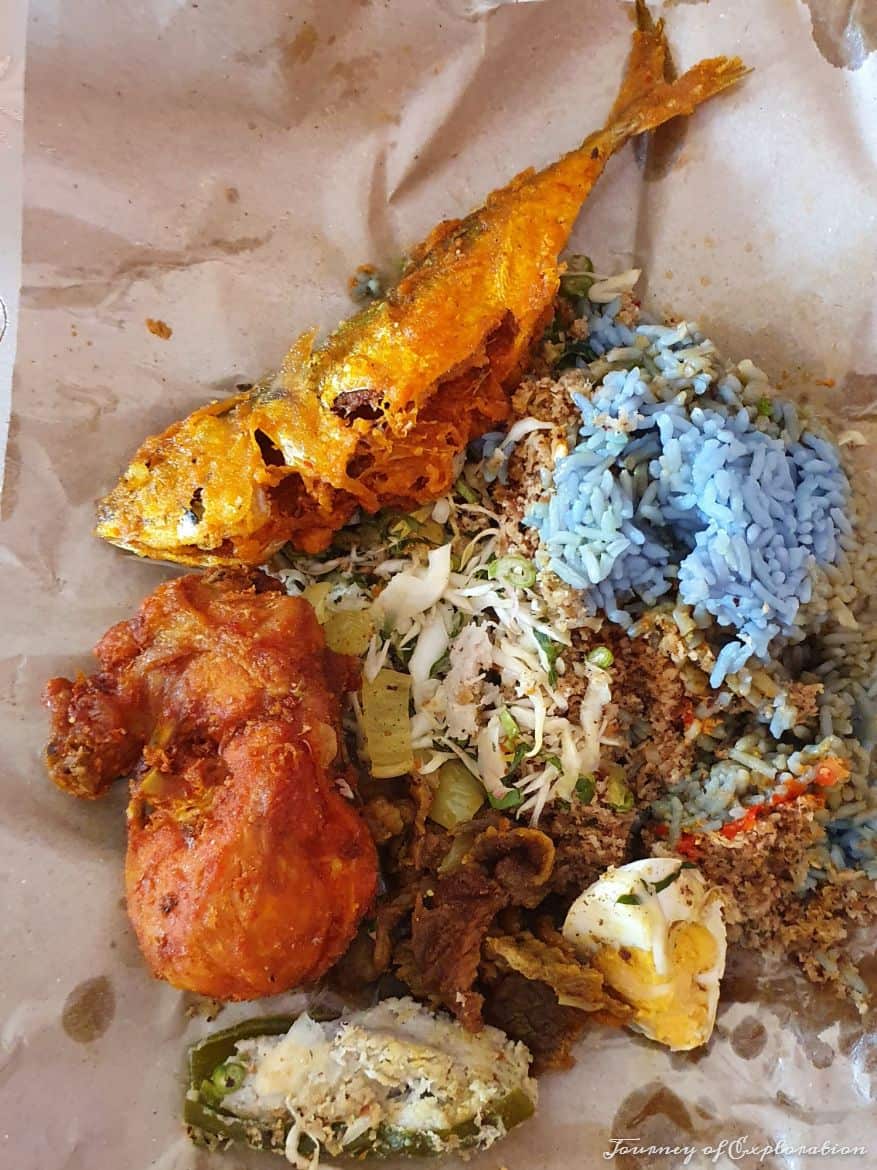
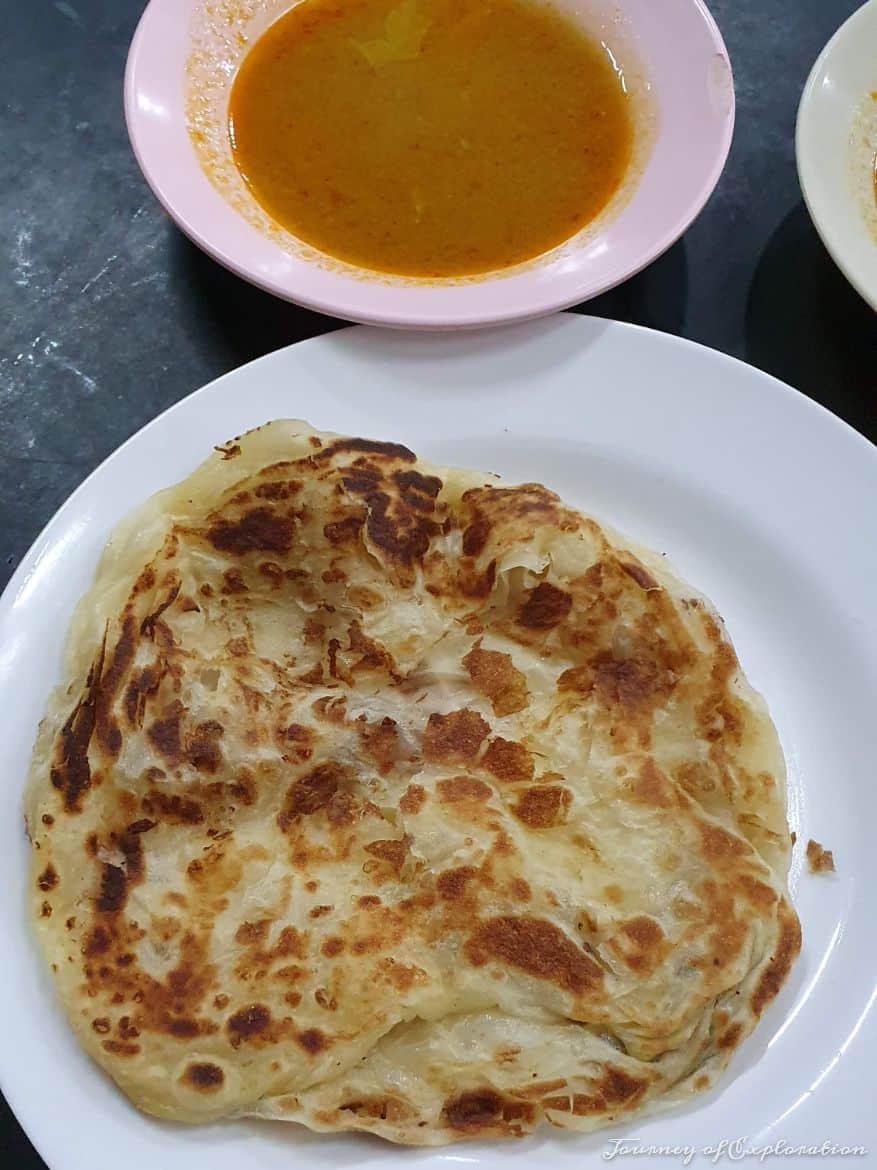
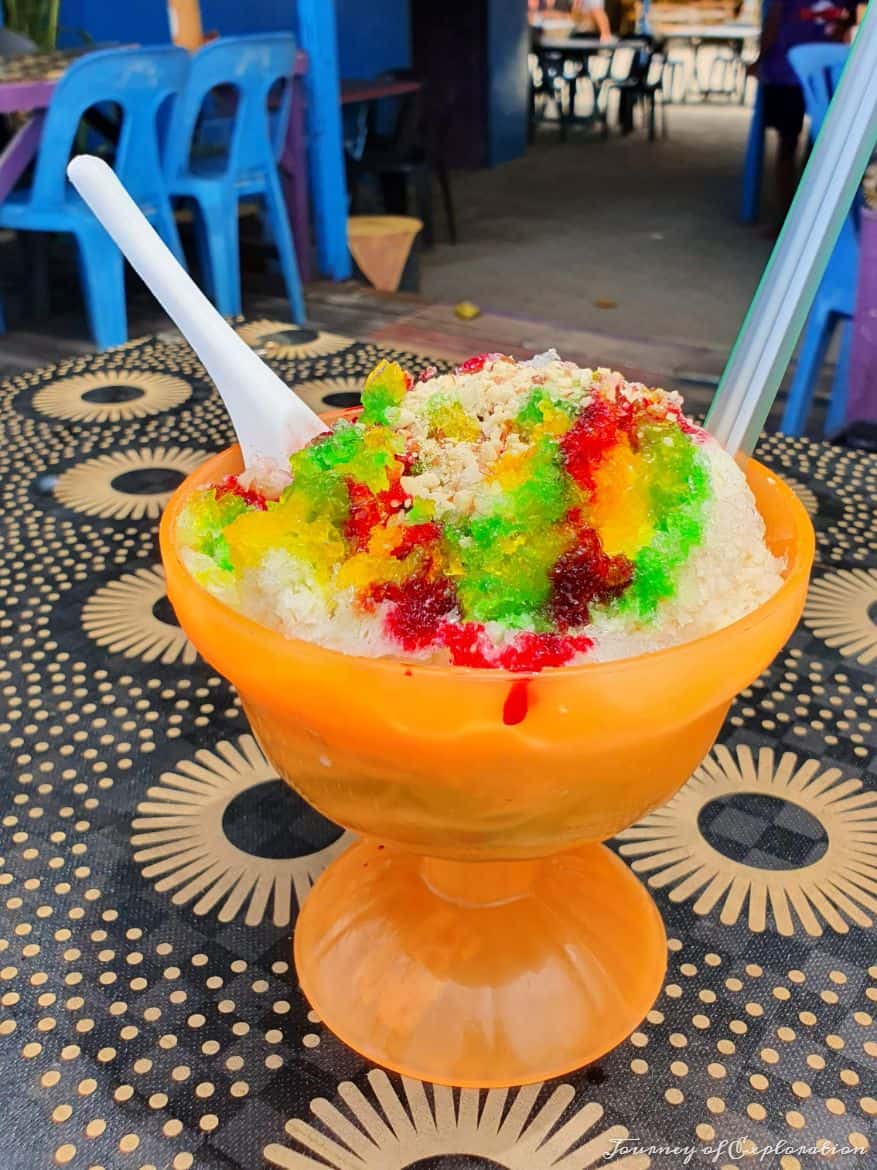
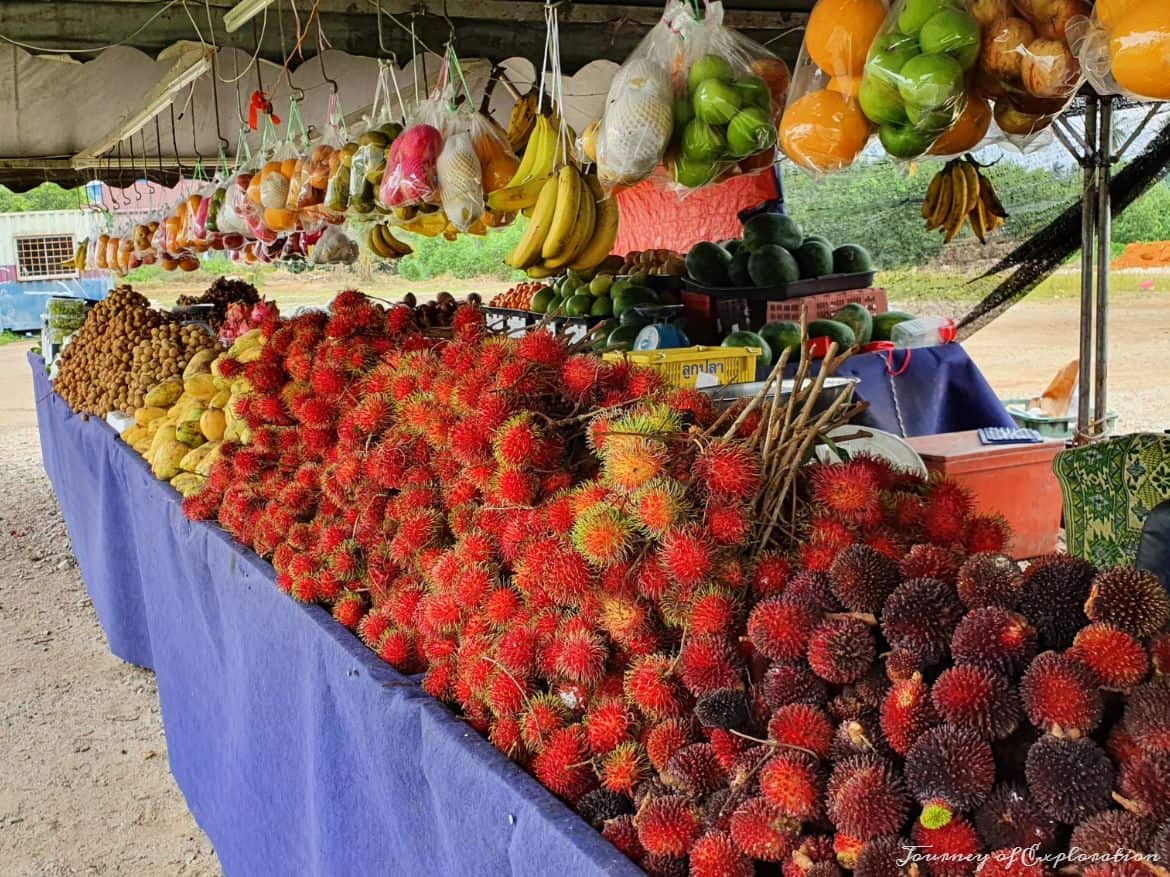
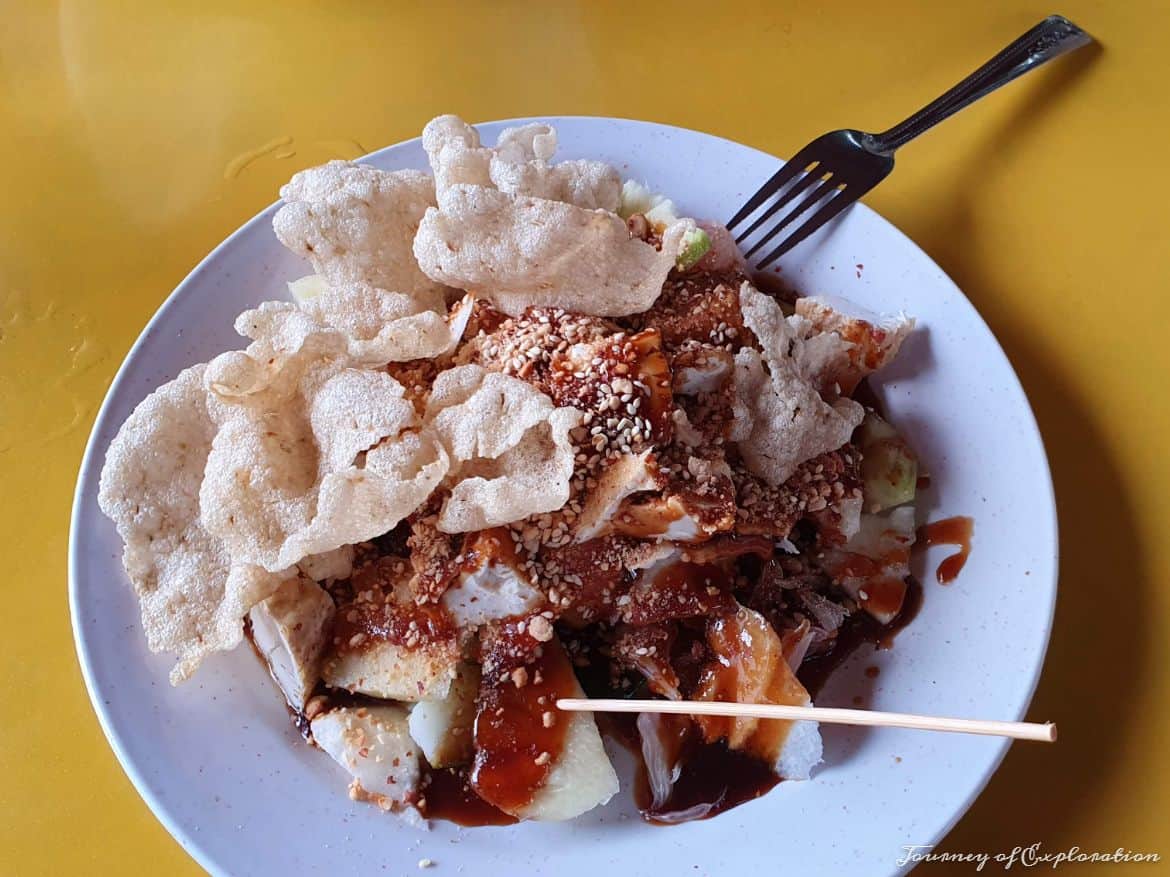
MALAYSIA THINGS TO DO
BEST attractions & PLACES TO VISIT
Peninsular Malaysia
- Kuala Lumpur: Kuala Lumpur, often shortened to KL, is the vibrant capital and largest city of Malaysia. It’s a bustling metropolis with diverse architecture, cuisine, and culture. Must-see attractions:
- Petronas twin towers: They dominate the Kuala Lumpur skyline and the observation deck provides stunning views of the city.
- Menara KL Tower: Another towering landmark, Menara KL offers 360-degree views and a revolving restaurant.
- Sultan Abdul Samad Building: A beautiful Moorish-style building that houses the National Textile Museum.
- National Museum: Learn about Malaysia’s history and culture through exhibits on archaeology, ethnography, and art.
- Merdeka Square
- Malacca (Melaka): A UNESCO World Heritage Site, Malacca is known for its historical architecture, vibrant street art, and a mix of cultural influences.
- Cameron Highlands: A hill station known for its tea plantations, cool climate, and lush landscapes. Explore the tea estates and enjoy the scenic beauty.
- Penang Island: Home to George Town, another UNESCO World Heritage Site, famous for its street art, diverse architecture, and delicious food.
- Langkawi: A tropical paradise with beautiful beaches, lush jungles, and the Langkawi SkyBridge offering panoramic views.
- Taman Negara: One of the world’s oldest rainforests with diverse flora and fauna. Canopy walks and river cruises offer a unique experience.
- Batu Caves, Selangor: A limestone hill featuring caves and temples, with the giant golden statue of Lord Murugan and the colourful steps making it an iconic site.
- Perhentian Islands: Pristine coral reefs, clear turquoise waters, and white sandy beaches make these islands a perfect destination for snorkelling and diving.
- Redang Island: Known for its crystal-clear waters and vibrant marine life, Redang is a popular destination for beach lovers and snorkelers.
- Pulau Tioman: Pulau Tioman, also known as Tioman Island, is located off the east coast of Peninsular Malaysia. This island paradise boasts stunning beaches, vibrant coral reefs, lush rainforests, and a laid-back atmosphere, making it a popular destination for tourists.
- Putrajaya: Putrajaya, Malaysia’s administrative capital, is a unique city with grand government building, the iconic pink mosque and a riverside setting.
- Kota Bharu: It is the capital of Kelantan state in Malaysia with a rich history and culture. It has some nice traditional buildings, a bustling market, and a delicious local cuisine.
- Kuala Terengganu: It’s a charming coastal city with the famous Crystal Mosque (Masjid Kristal).
- Johor Bahru: Second-largest city in Malaysia and a major economic hub It is known for its theme parks (Legoland Malaysia, Hello Kitty Town, and Puteri Harbour Family Theme Park) and shopping malls.
- Port Dickson: Fondly known as PD, is a coastal town in Negeri Sembilan, Malaysia. It’s a popular weekend getaway and beach resort destination, particularly for Malaysians and Singaporeans, offering a laid-back atmosphere, beautiful beaches, and a variety of water activities.
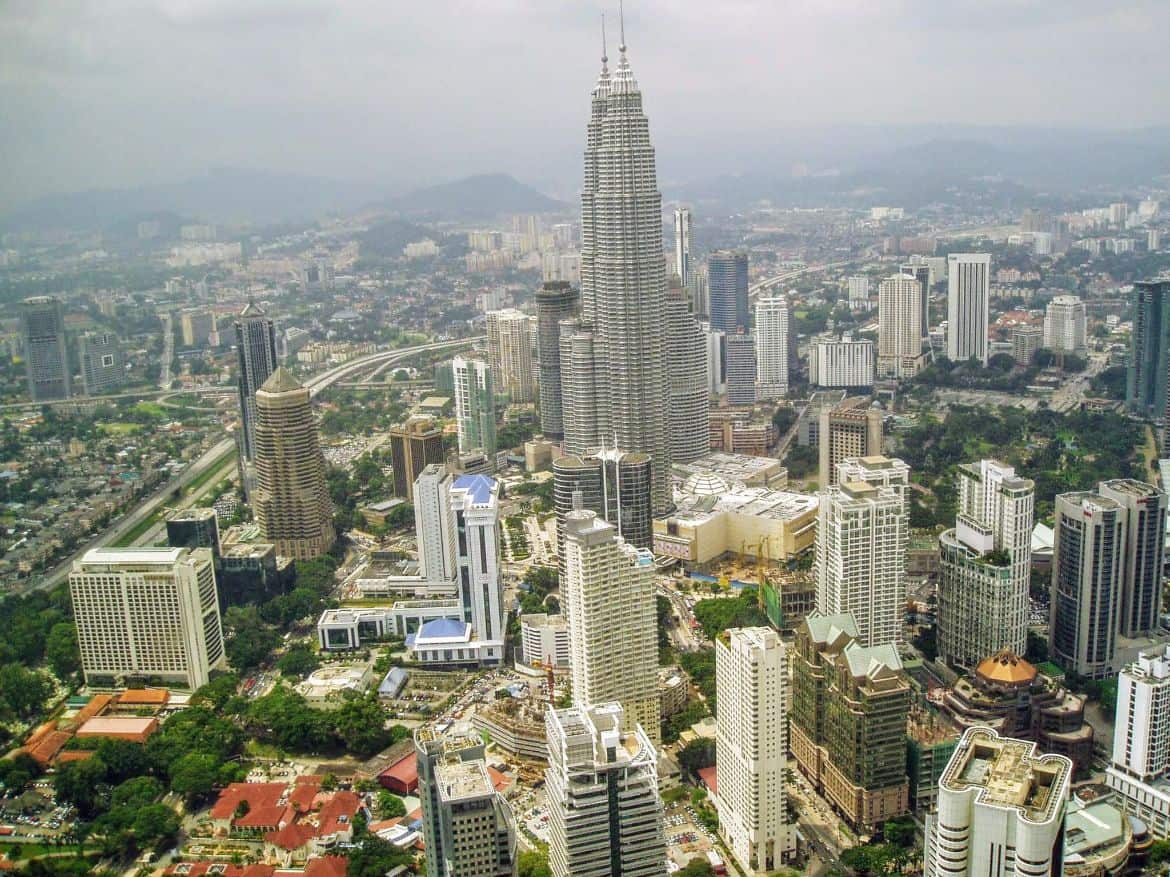
Borneo (Sabah and Sarawak)
- Mount Kinabalu: The highest peak in Southeast Asia, offering challenging treks and breathtaking views of the surrounding landscapes.
- Kinabatangan River: A haven for wildlife enthusiasts, the river is home to diverse species, including orangutans, pygmy elephants, and proboscis monkeys.
- Bako National Park, Sarawak: Malaysia’s oldest national park, known for its wildlife, trekking trails, and distinctive ecosystems.
- Sepilok Orangutan Rehabilitation Centre: Located in Sabah, this center is dedicated to the rehabilitation of orphaned orangutans, offering a chance to see them up close.
- Mulu Caves, Sarawak: A UNESCO World Heritage Site, Mulu National Park is famous for its limestone karst formations and extensive cave systems.
- Kuching, Sarawak: The capital city of Sarawak, known for its diverse culture, historic buildings, and lively Sarawak River waterfront.
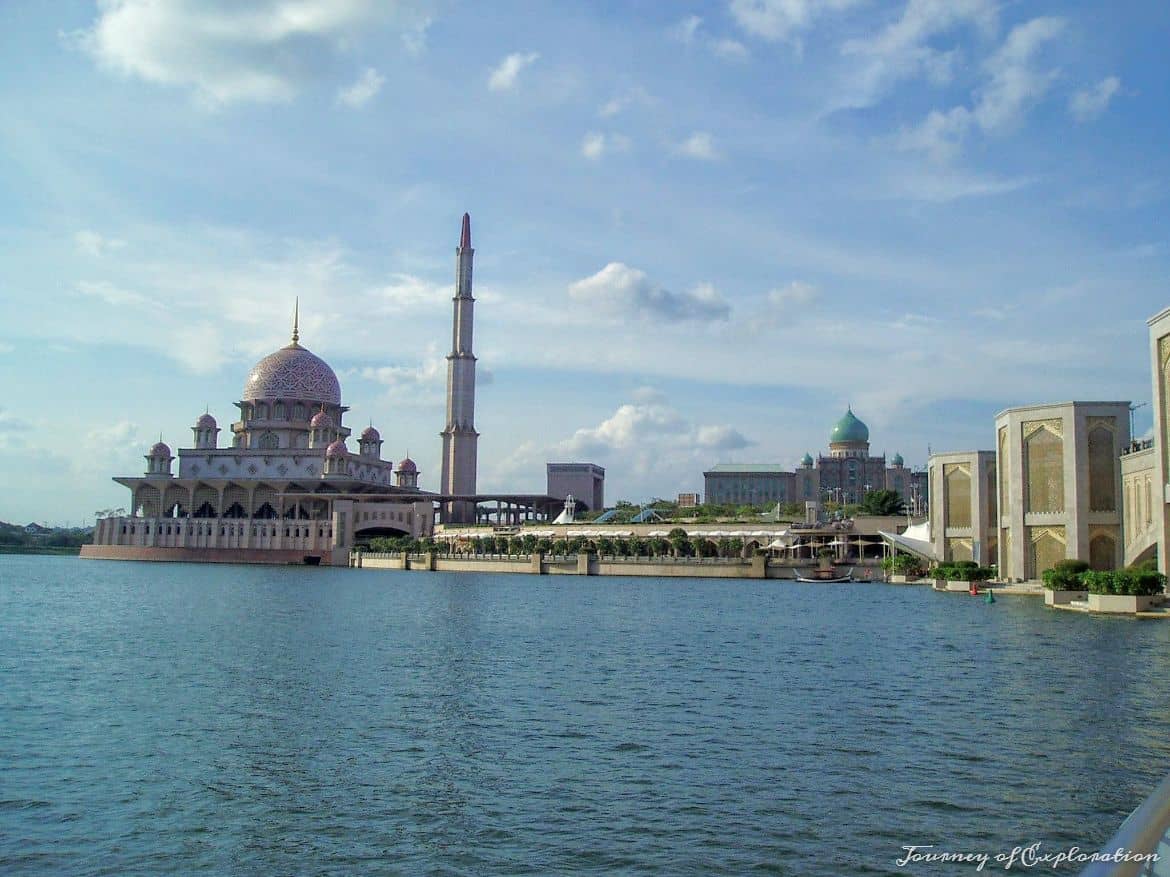
MALAYSIA BEST ISLANDS
- Langkawi: Known for its duty-free status, Langkawi is an archipelago of 99 islands in the Andaman Sea. It offers stunning beaches, lush rainforests, and attractions like the Langkawi SkyBridge.
- Perhentian Islands: Comprising Perhentian Besar and Perhentian Kecil, these islands are renowned for their crystal-clear waters, vibrant coral reefs, and a laid-back atmosphere. They are popular for snorkeling and diving.
- Tioman Island: Located in the South China Sea, Tioman Island is known for its diverse marine life, vibrant coral reefs, and lush rainforests. It’s a popular destination for snorkelling, scuba diving, and trekking.
- Redang Island: A part of the protected Terengganu Marine Park, Redang Island boasts powdery white sands, clear turquoise waters, and excellent snorkelling and diving opportunities.
- Pangkor Island: Accessible from the west coast of Peninsular Malaysia, Pangkor Island offers tranquil beaches, historic Dutch ruins, and opportunities for water activities like snorkelling and kayaking.
- Sipadan Island: Located off the coast of Sabah in Borneo, Sipadan is renowned for its world-class diving sites. It’s a marine paradise with diverse underwater life, including turtles, sharks, and coral gardens.
- Kapas Island: Also known as Pulau Kapas, this small island off the east coast of Peninsular Malaysia is famous for its white sandy beaches, clear waters, and a laid-back atmosphere.
- Rawa Island: A private island off the east coast of Peninsular Malaysia, Rawa Island offers pristine beaches, coral reefs, and a tranquil environment for relaxation.
- Mabul Island: Known for its proximity to Sipadan, Mabul Island is famous for muck diving and is a haven for underwater photographers. The island offers a range of diving experiences.
- Lankayan Island: Located in the Sulu Sea, Lankayan Island is known for its exclusive dive resorts and is a great destination for those seeking a peaceful retreat and excellent diving opportunities.
- Lang Tengah Island: Lang Tengah Island, located close to Redang, is known for its crystal-clear waters and vibrant coral reefs. It’s an excellent spot for snorkelling.
- Boheydulang Island: A small mountainous island inside a marine park, accessible as part of a boat tour excursion. It offers hiking, diving, and snorkelling opportunities. Great view from the top.
- Pulau Sibuan: A tiny island with crystal clear waters, great for snorkelling.
- Mataking Island: The further island from Semporna, a great scuba diving destination.
- Mantanani Islands: Mantanani Islands are tiny islands in Sabah with pristine beaches and clear waters. It’s a fantastic location for diving and snorkelling, and you might even spot dugongs in the surrounding waters.
- Tunku Abdul Rahman National Park: This island chain off Kota Kinabalu offers a variety of beaches, ranging from secluded coves to lively resorts. Explore the islands, trek through the jungle, and relax on the beach.
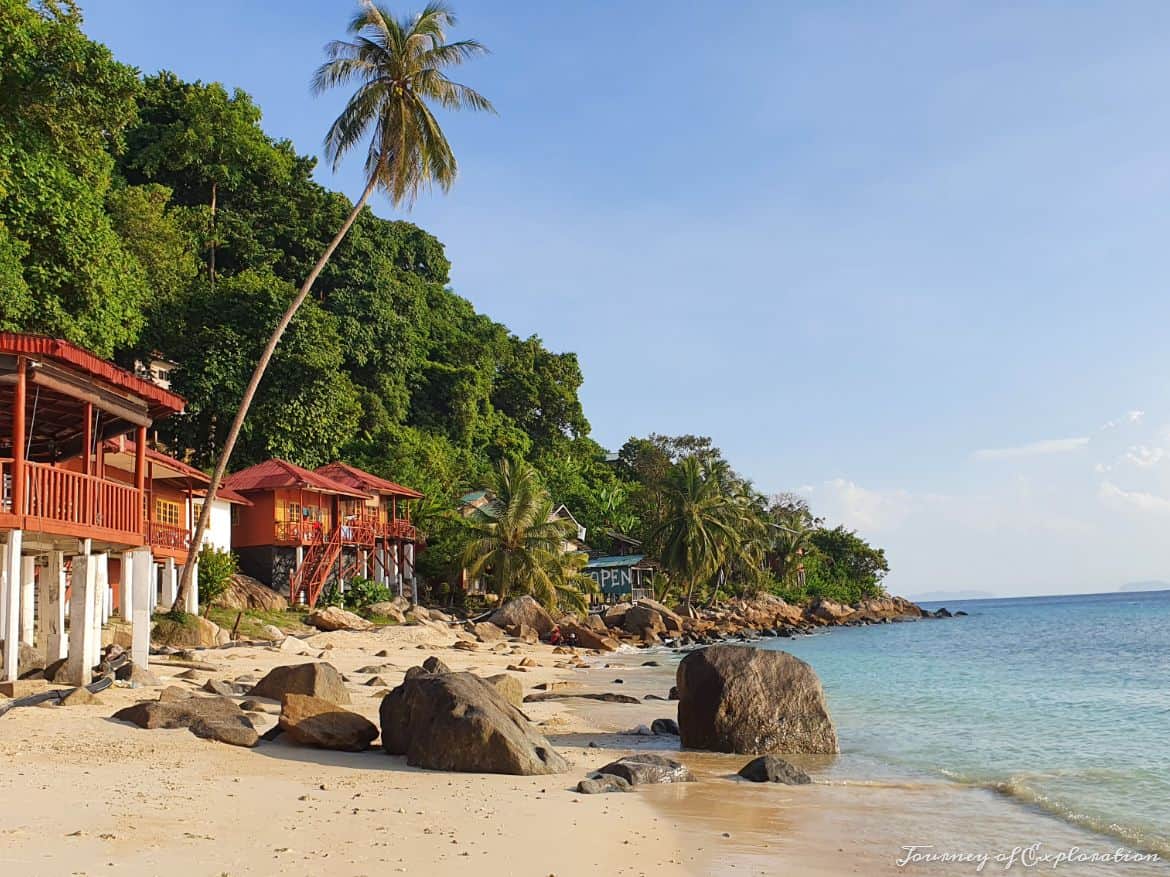
BEST BEACHES IN MALAYSIA
Malaysia is home to some stunning beaches, offering white sands, crystal-clear waters, and beautiful coastal landscapes. Here are some of the best beaches in Malaysia:
- Langkawi – Cenang Beach: Cenang Beach in Langkawi is one of the most popular and vibrant beaches in Malaysia. It features a long stretch of soft, golden sand, and the area is known for its water sports, restaurants, and nightlife.
- Perhentian Islands – Long Beach: Long Beach on Perhentian Kecil is a paradise for beach lovers. The powdery white sand and clear turquoise waters make it an ideal spot for swimming, snorkelling, and relaxing. The beach has a laid-back atmosphere.
- Tioman Island – Juara Beach: Juara Beach on Tioman Island is a serene and less crowded beach, surrounded by lush greenery. It’s perfect for those seeking a peaceful retreat. The beach is known for its gentle waves, making it suitable for swimming and kayaking.
- Redang Island – Long Beach: Long Beach on Redang Island boasts powdery white sand and clear waters. It’s an excellent spot for snorkelling, and the vibrant coral reefs are home to diverse marine life. The beach is surrounded by lush tropical vegetation.
- Pangkor Island – Teluk Nipah Beach: Teluk Nipah Beach on Pangkor Island is a popular beach known for its calm waters and scenic surroundings. It’s suitable for swimming, and you can also find water sports activities. The beach is lined with coconut trees and has a relaxed atmosphere.
- Penang – Batu Ferringhi Beach: Batu Ferringhi Beach in Penang is a bustling beach with a range of water sports and beachfront activities. The evening market along the beach offers a lively atmosphere, and the area has numerous resorts and restaurants.
- Desaru Beach, Johor: Desaru Beach in Johor is known for its long coastline and soft sandy shores. It’s a popular destination for water activities such as jet-skiing and kayaking. The beach is complemented by lush greenery and a relaxing atmosphere.
- Cherating Beach, Pahang: Cherating Beach is a popular beach along the east coast of Peninsular Malaysia. It’s known for its laid-back vibe, perfect for those seeking relaxation. Cherating is also famous for its surfing opportunities during the monsoon season.
- Pantai Teluk Kemang, Port Dickon: The most popular sandy beach in Port Dickson with hawker stalls, souvenir shops and water sports. Very busy with families, mainly locals spending their holidays in the nearby hotels.
- Tanjung Aru Beach, Kota Kinabalu: Tanjung Aru Beach near Kota Kinabalu offers stunning sunset views and a relaxing atmosphere. It’s a great spot to enjoy a leisurely stroll along the sandy shores and indulge in local seafood at the nearby stalls.
- Teluk Chempedak, Pahang: Teluk Chempedak in Kuantan, Pahang, is a picturesque beach with a wide sandy shore. It’s a popular destination for swimming and water sports, and the beach is surrounded by lush green hills.
- Tanjung Rhu Beach, Langkawi: Tanjung Rhu Beach in Langkawi is known for its pristine beauty and calm waters. The beach is fringed with casuarina trees, creating a serene and romantic atmosphere. It’s an excellent spot for a peaceful getaway.
- Pantai Kerachut, Penang: Pantai Kerachut in Penang is known for its natural beauty and pristine environment. It can be reached by hiking through the Penang National Park, adding an adventurous element to your beach visit.
- Perhentian Islands – Turtle Beach: The best beach in Pulau Perhentian Besar with beautiful waters and the chance to spot the famous turtle.
- Teluk Dalam, Pulau Redang: Less visited white sandy beach on the north side of Redang island near the Taaras Resort
- Taaras Beach: Amazing white sandy beach in front of the Taaras Resort in Redang
You can check the location of these beaches on this map.
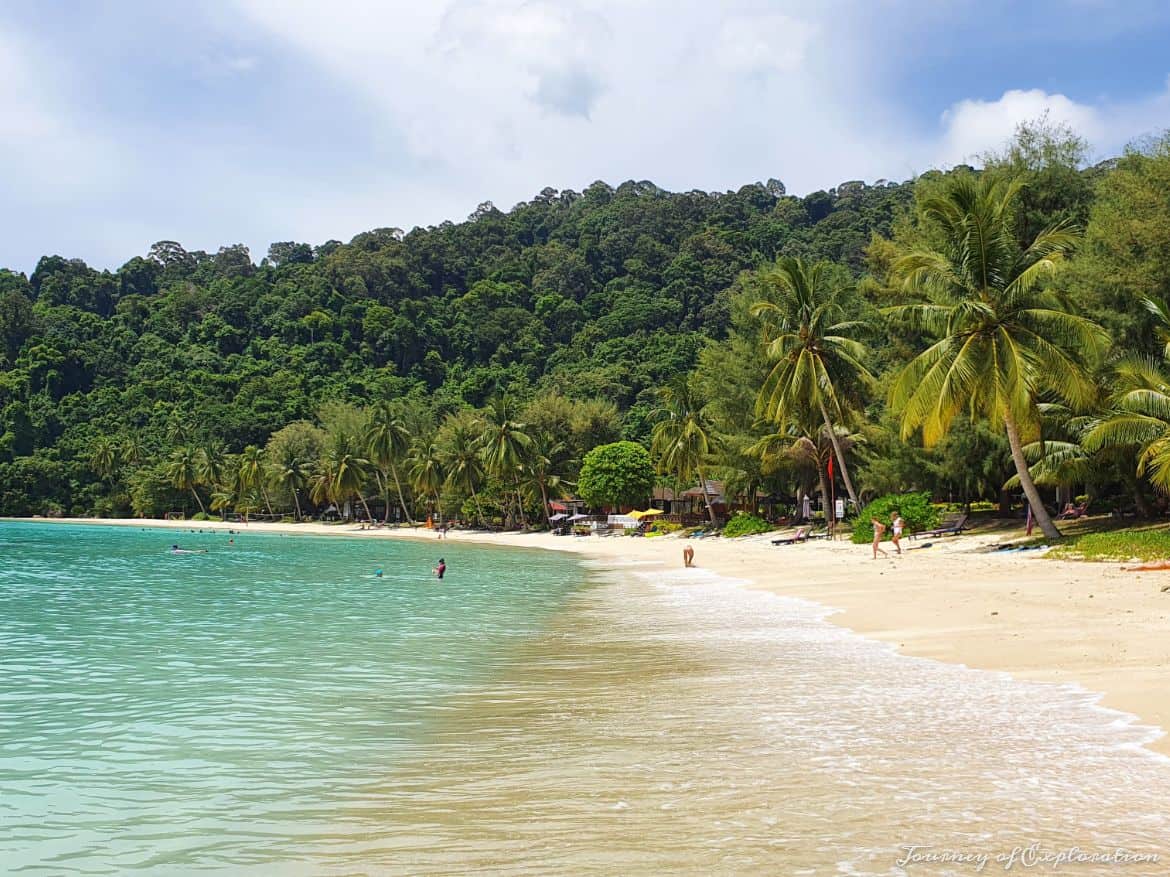
MALAYSIA TOURIST MAP
You can click on the map below for the location of the best attractions, restaurants & hotels, as well as the best places, islands and beaches to visit in Malaysia.
To save the map, make sure you are logged in to your Google account, then click on the star to the right of the title. To locate the map go to your Google Maps app (or Account), click on ‘Saved’ (or ‘Your Places’), and select ‘Maps’.
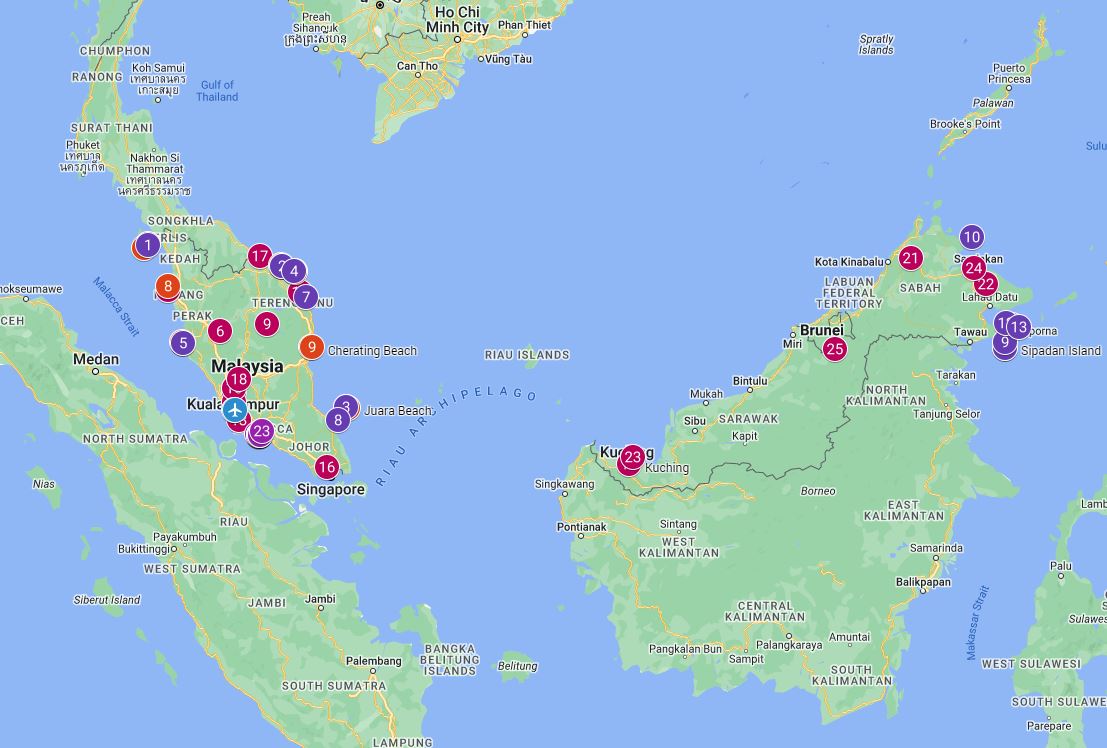
MALAYSIA ITINERARY
It is worth staying in Malaysia for 2 to 4 weeks if you want to explore both the East and West Coast of Peninsular Malaysia as well as Borneo. The following itinerary includes things to do for 3 weeks with additional days to explore Brunei and Singapore as optional trips. This itinerary is packed with a mix of city life, cultural exploration, nature adventures, and beach relaxation. Note that the pace is intense, so be prepared for early mornings and long days.
Day 1-3: Kuala Lumpur
- Day 1: Arrival and City Exploration
- Morning arrival in Kuala Lumpur.
- Visit Petronas Towers and Suria KLCC Mall.
- Evening stroll in Bukit Bintang.
- Day 2: Cultural and Historical Sites
- Morning visit to Batu Caves.
- Afternoon exploring Merdeka Square, Sultan Abdul Samad Building, and National Mosque.
- Evening at Jalan Alor for street food.
- Day 3: Modern and Nature Attractions
- Day trip to Putrajaya
- Afternoon at the National Museum and Islamic Arts Museum.
- Evening at KLCC Park.
Day 4-5: Cameron Highlands
- Day 4: Travel to Cameron Highlands
- Morning bus or drive to Cameron Highlands.
- Afternoon tea plantation tour.
- Day 5: Highland Exploration
- Morning jungle trekking in Mossy Forest.
- Afternoon visit to Butterfly Farm and Strawbery Farm
Day 6-7: Penang
- Day 6: Travel to Penang
- Morning bus to Penang.
- Afternoon exploring Georgetown.
- Day 7: Culture and Beach
- Morning visit to Penang Hill by funicular & Kek Lok Si Temple.
- Afternoon visit to Penang National Park and hike to Monkey Beach.
- Late swim at Batu Ferringhi Beach.
Day 8-9: Langkawi
- Day 8: Travel to Langkawi
- Flight or ferry to Langkawi.
- Afternoon visit to Langkawi SkyBridge.
- Day 9: Island Exploration
- Morning island hopping boat tour.
- Afternoon at Cenang Beach & Tanjung Rhu Beach
- Evening visit to Eagle Square.
Day 10-11: Melaka (Malacca)
- Day 10: Travel to Melaka
- Morning flight to Kuala Lumpur and bus to Melaka
- Afternoon exploring Dutch Square and Stadthuys.
- Day 11: Historical Melaka
- Morning visit to A Famosa Fortress and St. Paul’s Church.
- Afternoon at Jonker Street and Melaka River Cruise.
Day 12-14: Kota Bharu & Perhentian Islands
- Day 12: Travel to Perhentian Islands
- Early Bus to the KLIA airport for flight to Kota Bharu
- Taxi ride or bus to Kuala Besut for the ferry to Perhentian Islands.
- Day 13: Island Paradise
- Half-day boat tour of the islands with snorkelling.
- Explore Long Beach and Coral Bay.
- Day 14: Travel to Kota Bharu
- Afternoon ferry back to Kuala Besut and bus to Kota Bharu
- Explore the city
- Overnight stay in Kota Bhahru
Day 15-16: Kota Kinabalu, Sabah (Borneo)
- Day 15: Travel to Kota Kinabalu
- Fly to Kota Kinabalu in Sabah, Borneo.
- Afternoon city exploration.
- Day 16: Island Hopping
- Full-day island hopping tour to Tunku Abdul Rahman Marine Park
Day 17-18: Sandakan (Borneo)
- Day 17: Travel to Sandakan
- Early flight to Sandakan
- Visit the Sepilok Orangutan Centre
- Day 18: Wildlife Adventure
- Full-day trip to Kinabatangan River for a cruise and wildlife spotting.
Day 19-20: Brunei
- Day 19: Travel to Brunei
- Early flight to Kota Kinabalu
- And transfer to a flight to Bandar Seri Begawan in Brunei
- Day 20: Brunei
- Explore Bandar Seri Begawan
- Late flight to Kuching
Day 21-22: Kuching, Sarawak
- Day 21: Kuching
- Explore Kuching
- Visit the Sarawak Cultural Village
- Day 22: Bako National Park
- Day trip to Bako National Park
- Late flight to Singapore
Day 23-24: Singapore
- Day 23: Singapore
- Full day Exploration of the city
- Day 24: Singapore
- Visit the harbour
- Late flight to your destination or back to KL
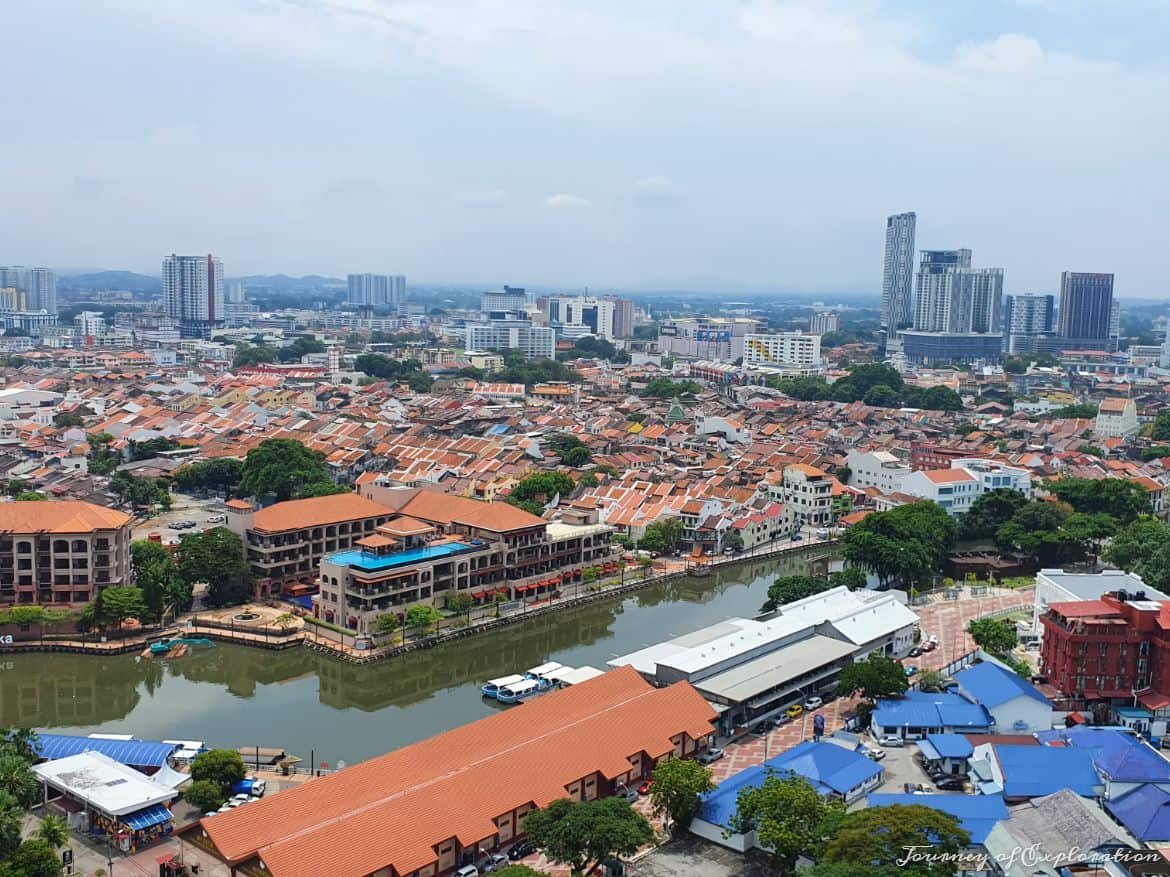
MALAYSIA PHOTOGRAPHY
You can check the best photographs from Malaysia here.
Here is a list of the best viewpoint locations in Malaysia where you enjoy great views.
- Petronas Towers Skybridge, Kuala Lumpur: While you can’t access the top floors, the Skybridge between the Petronas Towers offers stunning views of Kuala Lumpur.
- KL Tower, Kuala Lumpur: The observation deck at KL Tower provides a 360-degree view of Kuala Lumpur’s skyline.
- Penang Hill, Penang: Take the funicular train to the top of Penang Hill for panoramic views of Georgetown and the surrounding areas.
- Rainbow Skywalk, Georgetown: Located at the top of the KOMTAR building in Georgetown, this observation deck provides 360° of Penang,
- Langkawi Sky Bridge, Langkawi: A suspended bridge offering breathtaking views of the Andaman Sea and the lush rainforest below.
- Mount Kinabalu, Sabah: While reaching the summit requires a challenging climb, the lower viewpoints offer stunning vistas of the surrounding landscapes.
- The Shore Sky Tower, Melaka: One of the tallest buildings in Melaka with a rooftop observation deck providing amazing 360-degree views of the city and surrounding coast.
- Menara Taming Sari: A tower with a rotating observation deck in the centre of Melaka offering arguably the best city view (although not as high as the Sky Tower).
- Cameron Highlands, Pahang: The tea plantations and hills in Cameron Highlands provide picturesque views, especially at places like the Boh Tea Estate.
- Kek Lok Si Temple, Penang: The Kek Lok Si Temple complex offers stunning views of Penang from its hillside location.
- Batu Caves, Kuala Lumpur: Climb the steep steps to the entrance of the caves for a panoramic view of the city and the iconic golden statue.
- Genting Highlands, Pahang: The hill station is known for its cool climate and offers panoramic views of the surrounding mountains.
- Gunung Raya, Langkawi: The highest peak in Langkawi provides breathtaking views of the entire island and the Andaman Sea.
- Penang Bridge, Penang: Drive or walk along the Penang Bridge for impressive views of the island and the mainland.
- Broga Hill, Semenyih: A popular spot for sunrise or sunset hikes, providing sweeping views of the surrounding countryside.
- Bukit Taisho, Bahau: A nice hike near Bahau (Negeri Sembilan) with beautiful views from the top
- Alor Setar Tower: Located in Kedah, the tower’s observation deck offers panoramic views of the city and surroundings.
- Skyscape Johor Bahru (Menara JLand): Located next to KOMTAR shopping centre in Johor Bahru, this observation deck offers a great view of the whole Johor Bahru City Centre and the straights of Johor.
You can check these viewpoints’ locations and the best photo spots on the island on the following map.
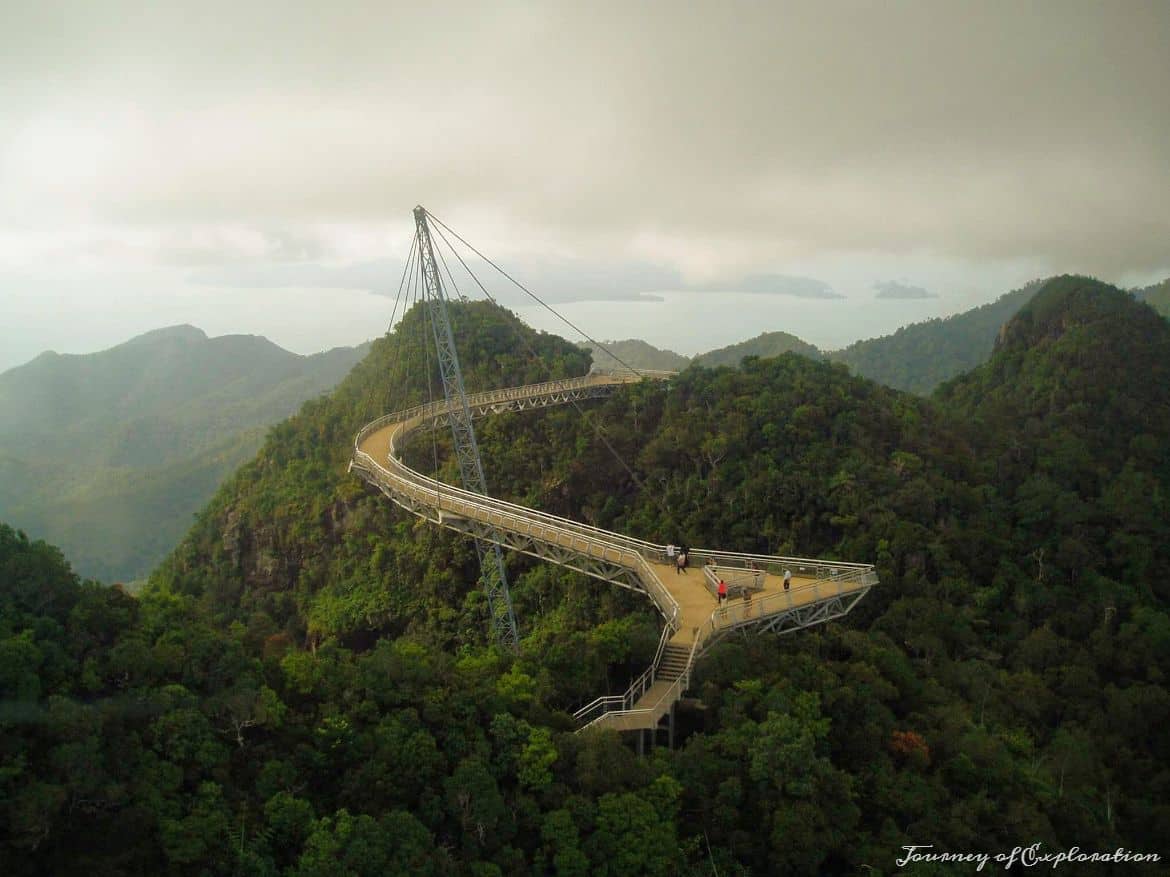
MALAYSIA ACTIVITIES
Malaysia is a great place for water activities like snorkelling, and scuba diving as well as hiking in the tropical rainforests. It is also a great place to encounter wildlife, like orangutans. Here are some popular activities you can enjoy in Malaysia
Hiking
- Mount Kinabalu: A challenging climb to the summit rewards hikers with breathtaking sunrise views. For those seeking less strenuous options, explore the lower trails surrounding the mountain.
- Cameron Highlands: Choose from various trails that lead through mossy forests, waterfalls, and scenic landscapes, offering different levels of difficulty.
Water Activities
- Snorkelling and Scuba Diving: Explore the vibrant underwater world around Malaysian islands like Perhentian, Redang, and Tioman. Encounter colourful coral reefs, diverse marine life, and even shipwrecks.
- Kayaking: Paddle through the mangrove forests of Langkawi or explore the calm waters around Penang for a unique perspective of the coastal landscapes.
Wildlife Encounters
- Sepilok Orangutan Rehabilitation Centre: Located in Sabah, this centre rehabilitates orphaned orangutans. Witness feeding sessions and observe these remarkable primates up close.
- Bornean Sun Bear Conservation Centre: Learn about the world’s smallest bears and their conservation. Support the efforts to protect sun bears and their habitats.
Theme Parks
- Sunway Lagoon, Kuala Lumpur: A family-friendly destination with water slides, amusement rides, a wildlife park, and a scream park.
- Legoland Malaysia Resort, Johor: Ideal for families and Lego enthusiasts, featuring themed rides, a water park, and interactive Lego displays.
River Cruises
- Kuching: Embark on a river cruise along the Sarawak River to witness the city’s skyline and catch glimpses of proboscis monkeys along the riverbanks.
- Kuala Selangor: Enjoy a firefly tour along the Selangor River at night, witnessing the magical display of fireflies lighting up the mangrove trees.
Top Events
- Hari Raya Aidilfitri: Also known as Eid al-Fitr, this Muslim festival marks the end of Ramadan. Malaysians celebrate with open houses, feasts, and vibrant cultural performances. It’s a time for forgiveness, reflection, and generosity.
- Chinese New Year: Celebrated with great enthusiasm, Chinese New Year marks the beginning of the lunar new year. Festivities include dragon and lion dances, traditional performances, and vibrant decorations. Chinatowns in cities like Kuala Lumpur and Penang come alive during this period.
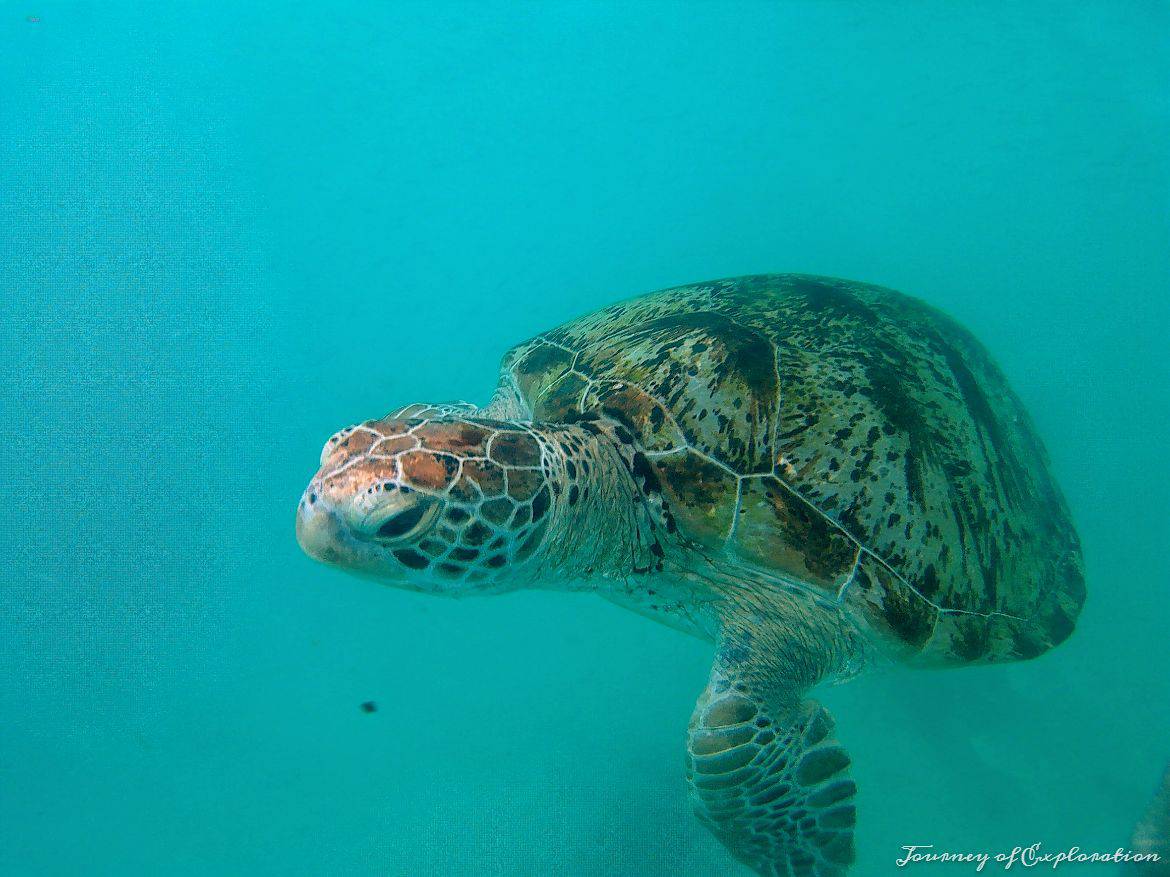
MALAYSIA TOURS
City Tours
Explore the vibrant cities of Kuala Lumpur, Penang, and Malacca with guided city tours. Visit iconic landmarks, historical sites, and cultural hotspots while learning about the history and culture of each city. These are good options for someone without a car. Some of the best tours available are:
- Kuala Lumpur City Tour Full Day including Petronas Towers and Batu Caves (8 hours, $57)
- Private Tour Kuala Lumpur with Petronas Twin Towers Observation Deck & Batu Cave by private transport (8 hours, $110)
- Penang: Flexible 6-Hour Highlights (6 hours, $80)
- Malacca UNESCO “World Heritage Site” Day Trip from Kuala Lumpur (10 hours, $71)
- Free walking tours by GuruWalk
Nature and Wildlife Tours
Discover Malaysia’s rich biodiversity with nature and wildlife tours. Visit national parks like Taman Negara or explore the rainforests of Borneo to encounter unique flora and fauna, including orangutans, proboscis monkeys, and diverse bird species.
- Private Full-Day Sepilok Orang Utan, Bornean Sun Bear and Rainforest Discovery Center Tour from Sandakan in Sahbah (8 hours, $125)
Food Tours
Embark on culinary tours to savour the diverse flavours of Malaysian cuisine. Explore street markets, join cooking classes, and indulge in a gastronomic adventure with local dishes such as Nasi Lemak, Char Kway Teow, and Satay.
- Sambal Streets Kuala Lumpur Food Tour with15+ food tastings (4 hours, $49)
More information about excursions & tours in Malaysia can be found here.
SHOPPING & THINGS TO BUY IN MALAYSIA
Malaysia is a shopping paradise with a mix of modern malls, bustling markets, and vibrant street scenes. Bargaining is common in markets, especially at street markets. Don’t hesitate to negotiate for a better price. Here are some of the best places for shopping in Malaysia:
- Suria KLCC: Located beneath the Petronas Towers, it’s a high-end mall with international and luxury brands.
- Pavilion Kuala Lumpur: A popular shopping destination with a mix of luxury and high-street brands.
- Bukit Bintang: This area is known for its shopping streets, including Jalan Alor and Pavilion Kuala Lumpur.
- Central Market: A cultural and heritage market offering traditional Malaysian crafts, textiles, and souvenirs.
Malaysia offers a variety of unique products that make for great souvenirs and gifts. Here are some things to consider buying in Malaysia:
- Batik: Traditional Malaysian fabric with intricate patterns and vibrant colours. You can find batik clothing, scarves, and even art pieces
- Songket: A luxurious handwoven fabric often used for special occasions. It features gold or silver threads and intricate patterns.
- Sarongs: Colourful and versatile, sarongs are widely used in Malaysia. They make great souvenirs and can be worn as clothing or used as home decor.
- Pewter Products: Malaysia is known for its high-quality pewter. Look for pewter figurines, tableware, or decorative items from brands like Royal Selangor.
- Traditional Wooden Crafts: Handcrafted wooden items such as traditional Malaysian masks, carvings, and wooden batik stamps.
- Islamic Art: Malaysia has a rich Islamic heritage, and you can find beautifully crafted Islamic art pieces, calligraphy, and prayer rugs.
- Durian-flavored Snacks: While fresh durian might be an acquired taste, durian-flavored snacks like candies, chocolates, and cookies are popular and make for interesting gifts.
- Malaysian Tea and Coffee: Bring home local teas like Boh Tea from the Cameron Highlands or try Malaysian coffee, such as the famous Ipoh white coffee.
- Banana and Tapioca Crisps
- Traditional Malay Games: Unique traditional games like Congkak (a traditional mancala game) or Wau (traditional kites) can be fascinating gifts.
- Tropical Fruits and Snacks: Bring back local snacks like pineapple tarts, kuih (traditional Malay cakes), or dried fruits.
- Batek Prints: Batek is a traditional Malaysian art form involving hand-painted or block-printed fabrics. Look for clothing or wall hangings with Batek designs.
- Malaysian Spices: Purchase a variety of local spices and spice mixes to recreate Malaysian flavours at home.
- Traditional Weapons: Items like keris (Malay dagger) or traditional weapons are available as decorative pieces and reflect Malaysia’s cultural heritage.
- Malaysian Gemstones and Pearls: Malaysia is known for its gemstones and pearls. Look for jewellery made from Malaysian jade, pearls, or other local gems.
- Nyonya Ware: Unique and colourful porcelain or ceramic kitchenware, often associated with Peranakan culture.
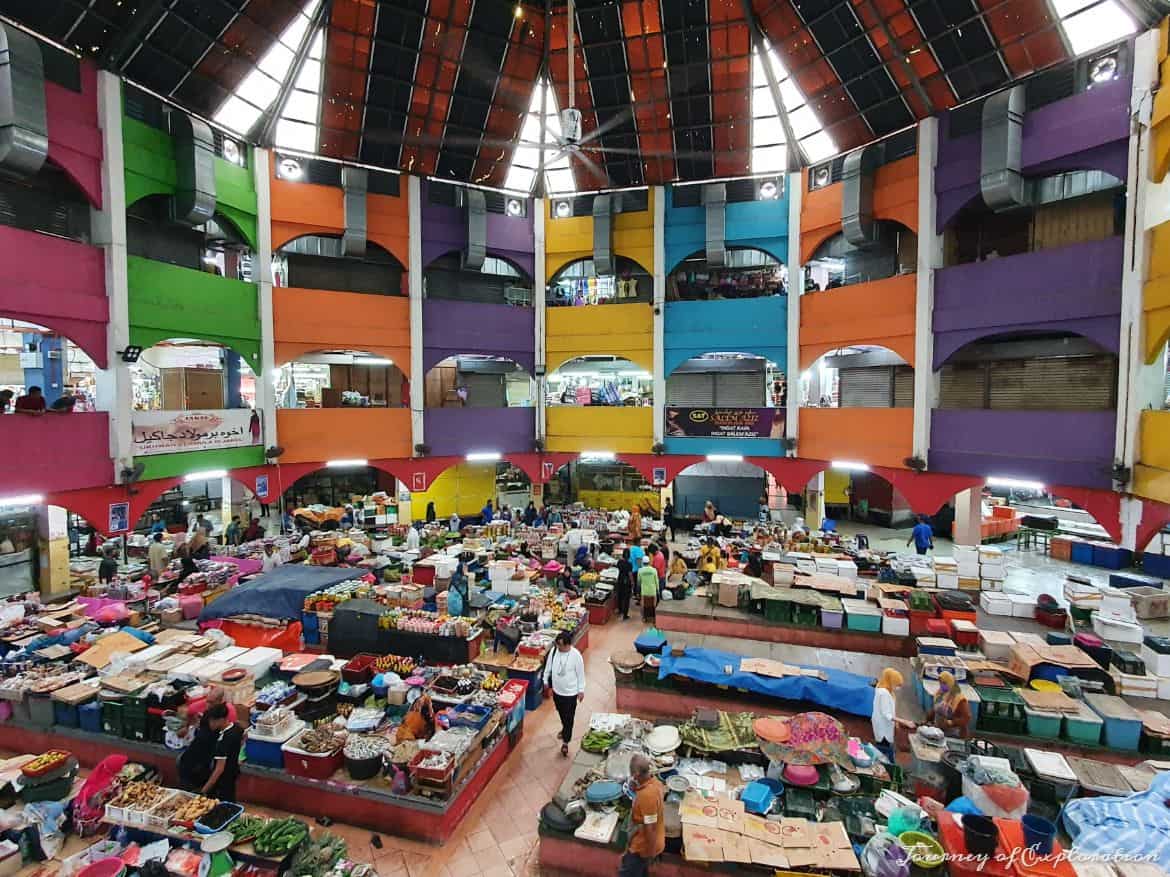
FURTHER READING
Some websites for more information about Malaysia:
- Malaysia Truly Asia: The official tourism website of Malaysia
Some good travel guides to buy before you visit Malaysia:
- The Rough Guide to Malaysia, Singapore & Brunei: It covers Kuala Lumpur, the west coast, the interior, the east coast, the south, Sarawak, Sabah, Brunei and Singapore
- Lonely Planet Malaysia, Singapore & Brunei: This is a comprehensive guide to Malaysia and is perfect for both exploring top sights and taking roads less travelled.
- DK Eyewitness Malaysia and Singapore (Travel Guide): Another good guide with beautiful photos (also in Kindle).
TRAVEL RESOURCES
- Flights: I always use Skyscanner as my first choice as it’s so easy to use and you can search best deals by month. Google Flights is another very good search engine.
- Accommodation: I always use Booking.com as my first choice, as it offers a great choice of accommodation at affordable prices and it’s so easy to use. Airbnb is a great alternative for homes and apartments to rent by real homeowners. HotelsCombined is one of the best search engines to check deals from different websites.
- Ferries:
- Car Rental: I always check Skyscanner for the cheapest car rental options. Discover Cars is also a good and easy-to-use website with great prices.
- Public Transport: You can use this website to check bus timetables on the island. Rome2Rio & 12go is a good website for checking prices & times on train and bus travel.
- Day Trips & Tours: Viator provides the most comprehensive list of day trips and you can book directly with them. GetYourGuide is also a great place to search for tours & activities to do.
- Travel Insurance: SafetyWing is a great choice for long-term travellers and digital nomads. Alternatively, you can use one of the price comparison websites for cheaper quotes.
- Disclosure: This post may contain affiliate links, and at no extra cost to you, I may receive a small commission if you make a purchase. I recommend only products and companies I use and the income goes to keeping this site running and ad-free.

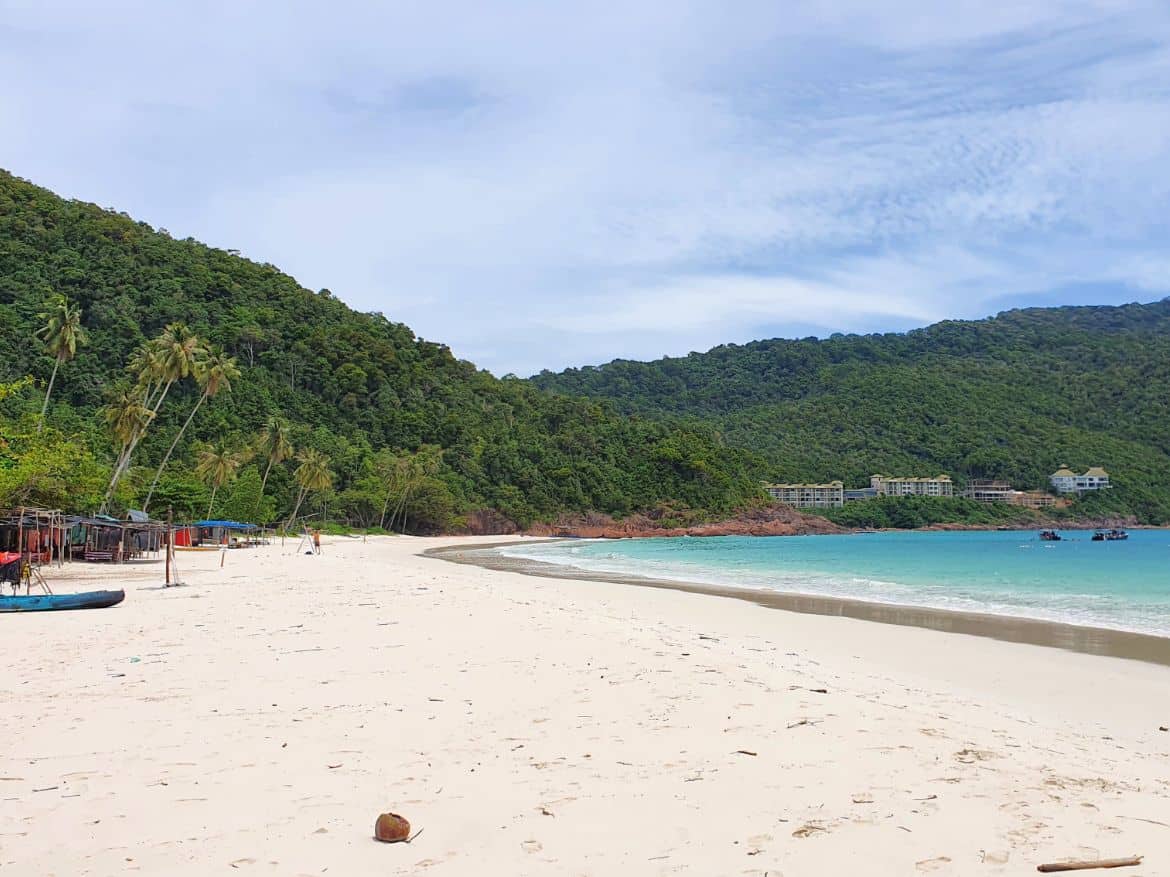
2 comments
Great summary of the beautifully diverse country, definitely cannot wait for my next trip there!
Thanks 🙂